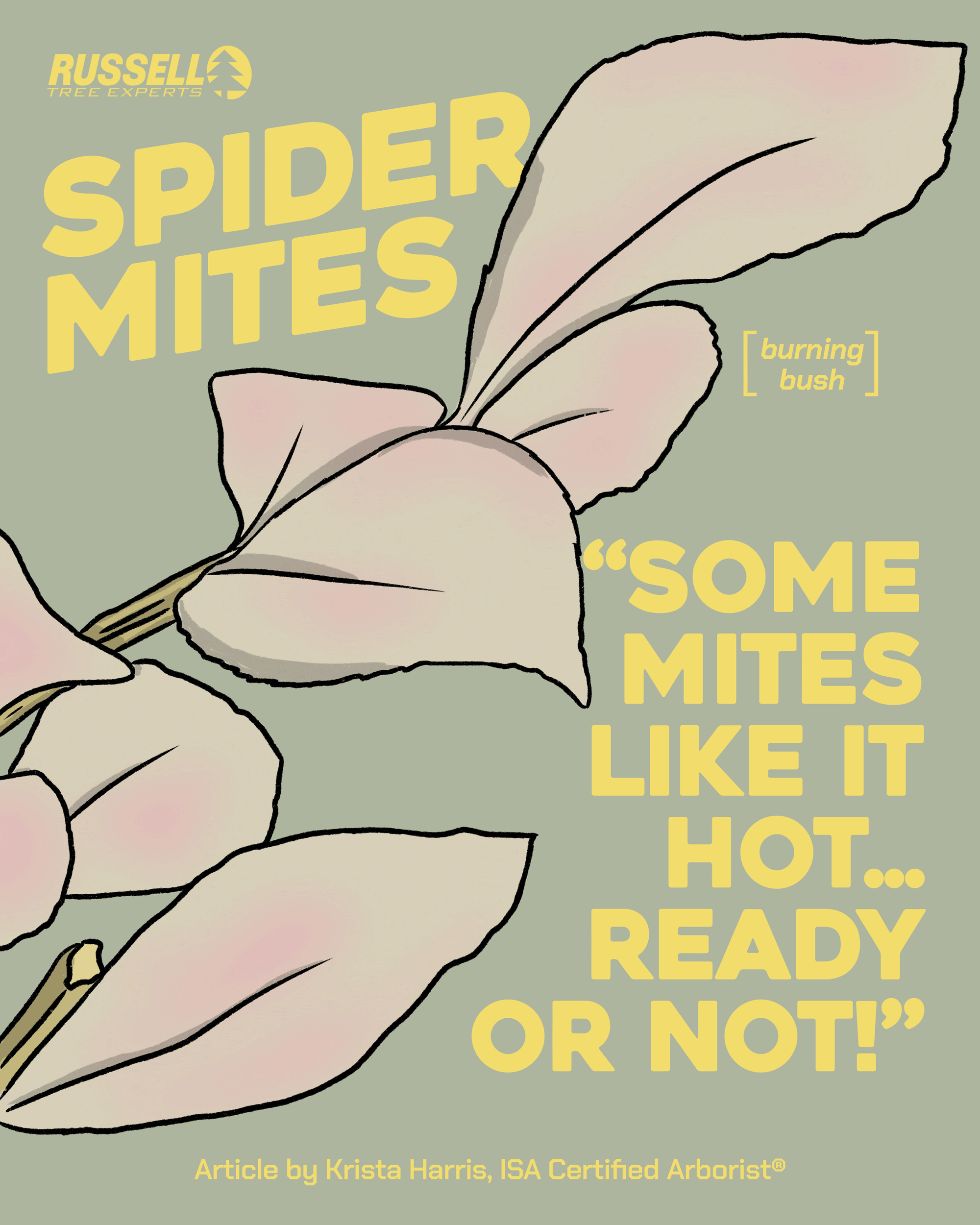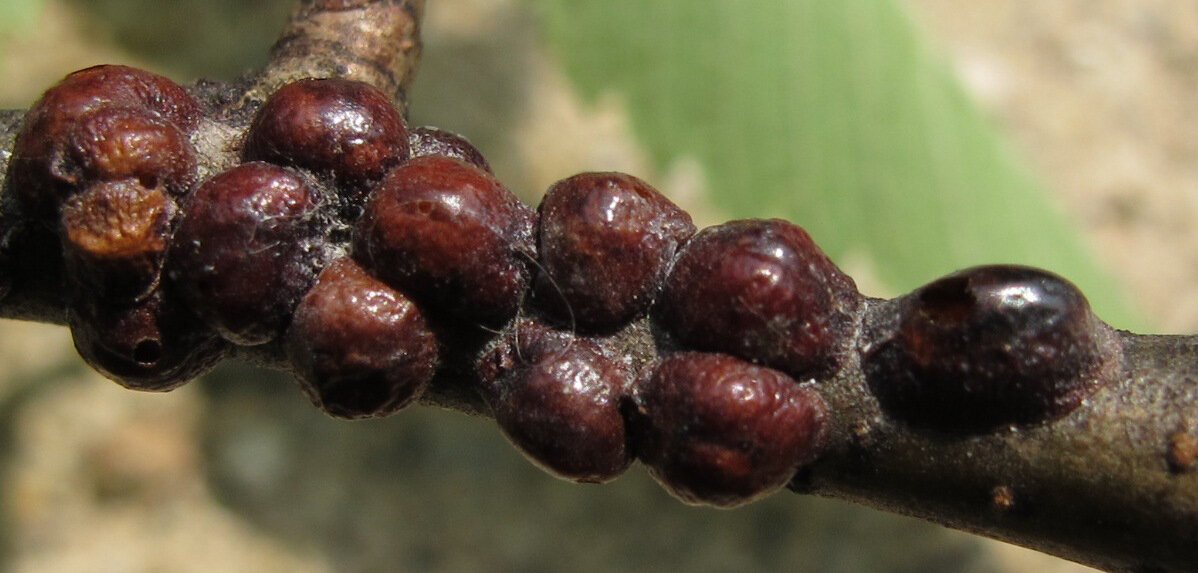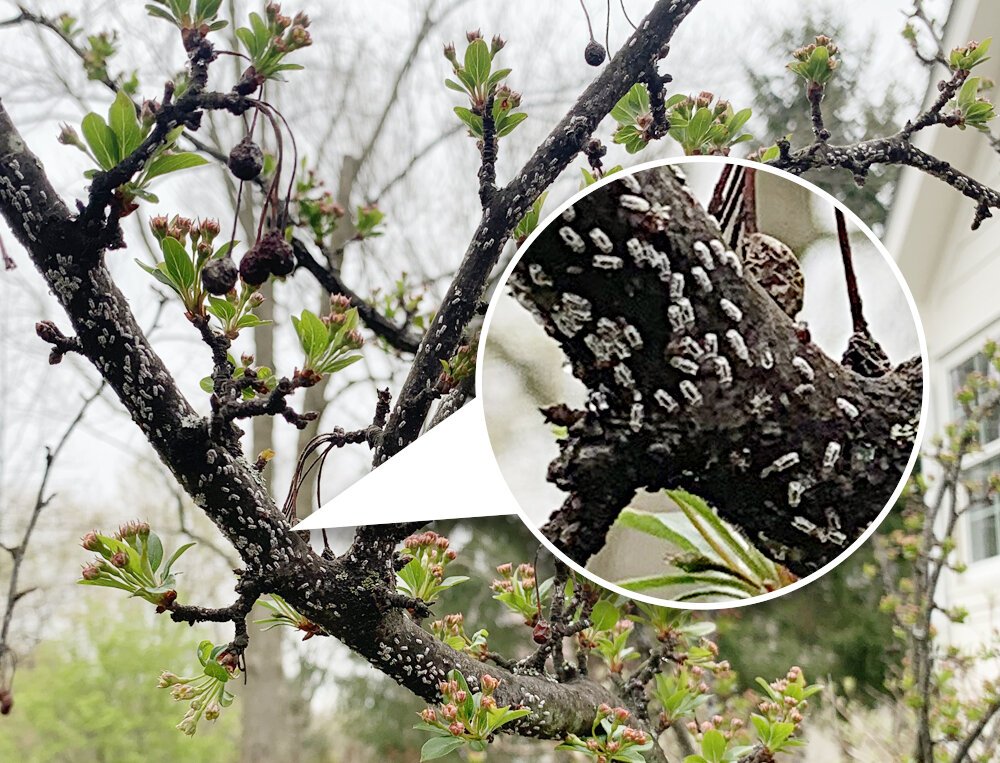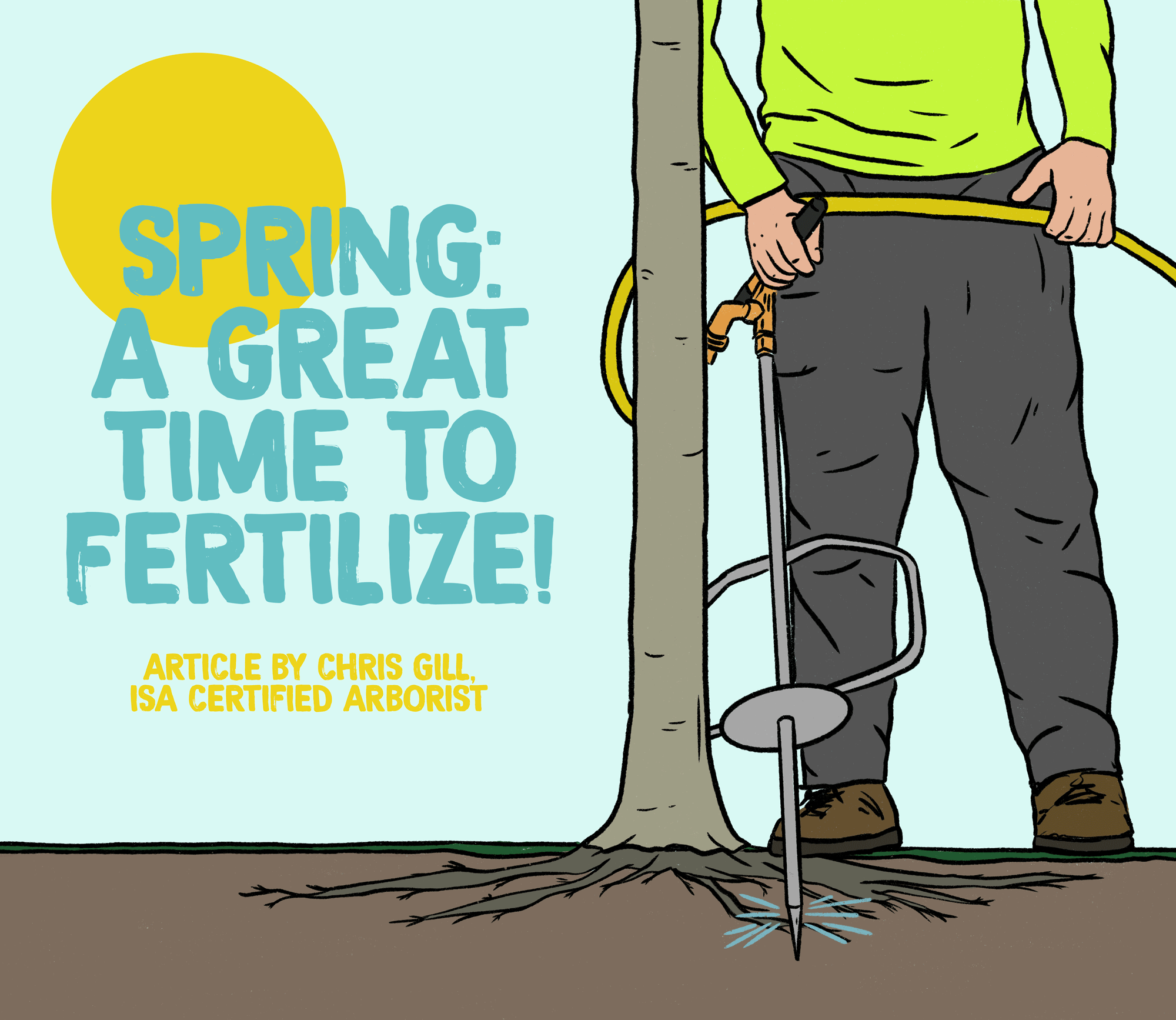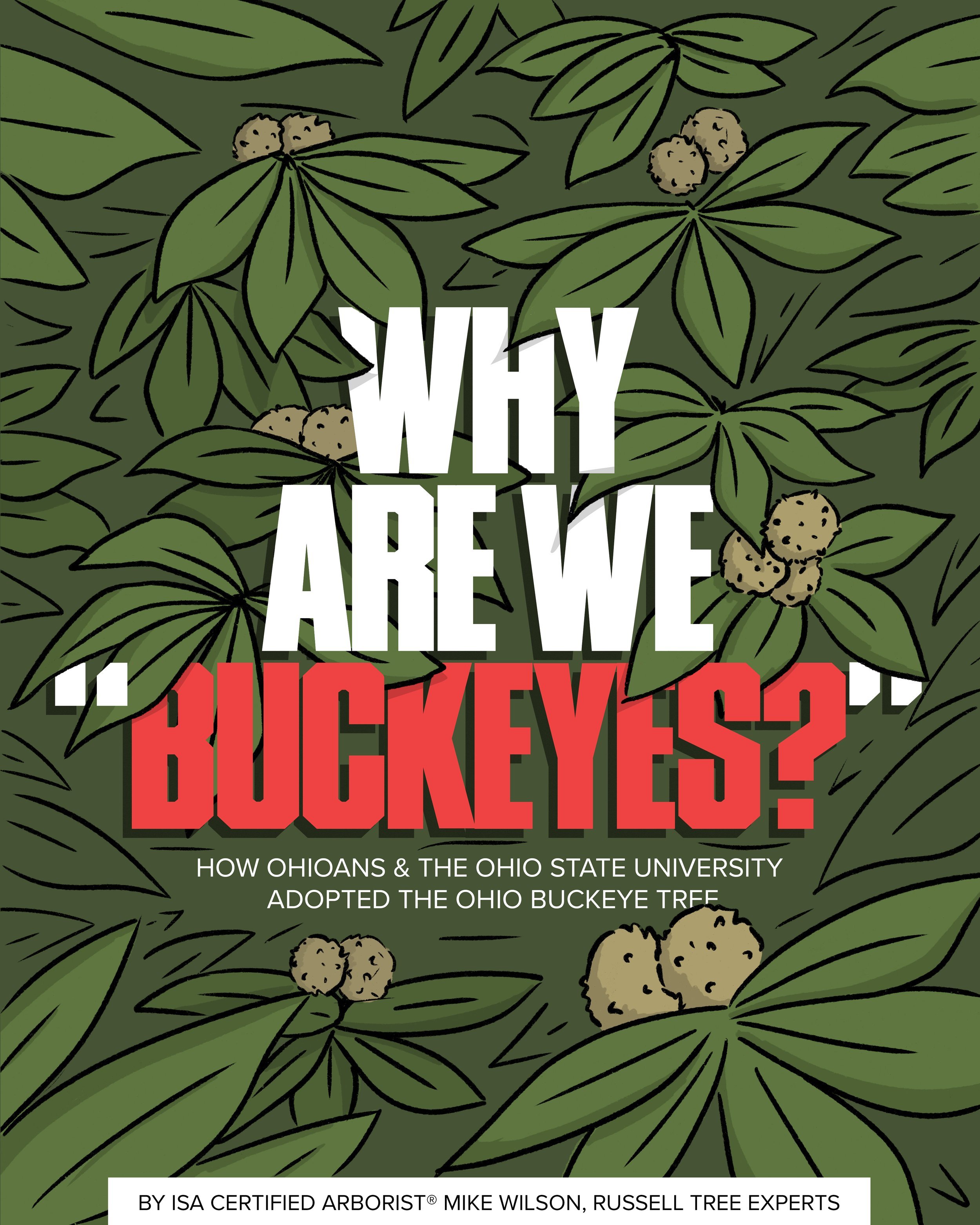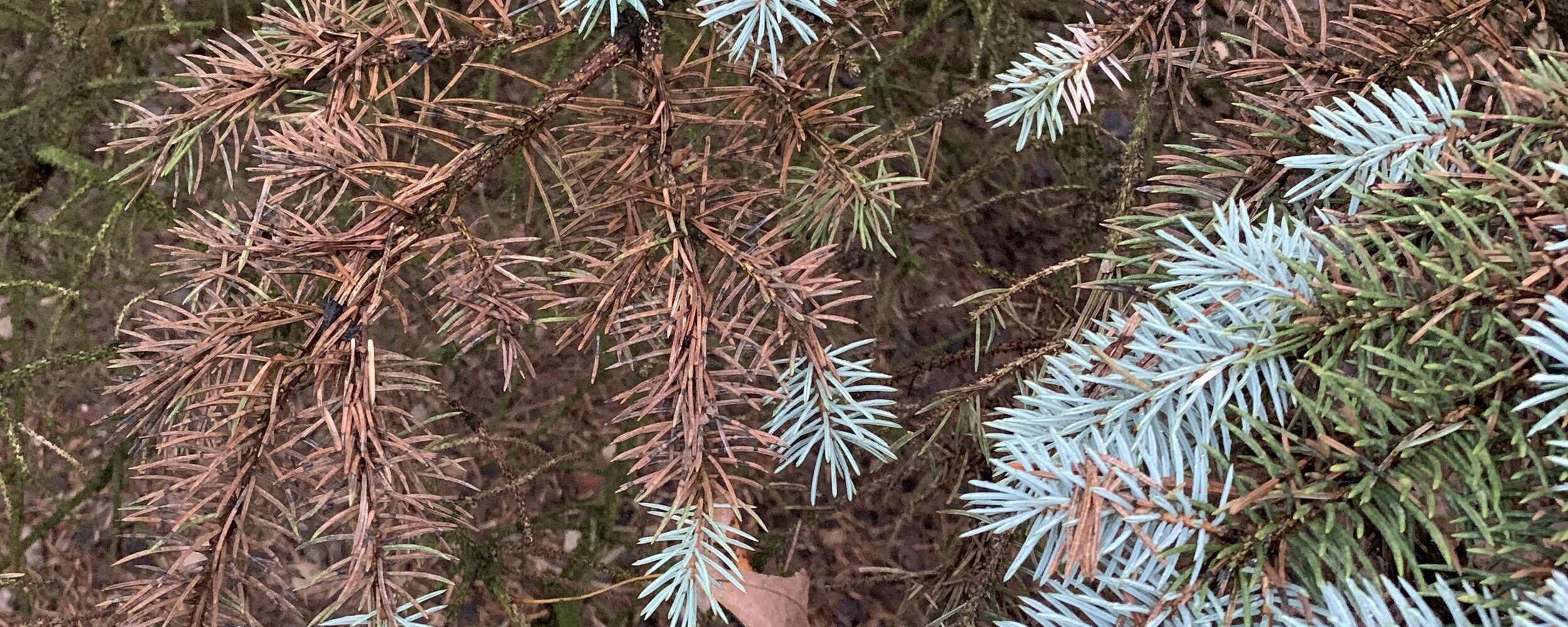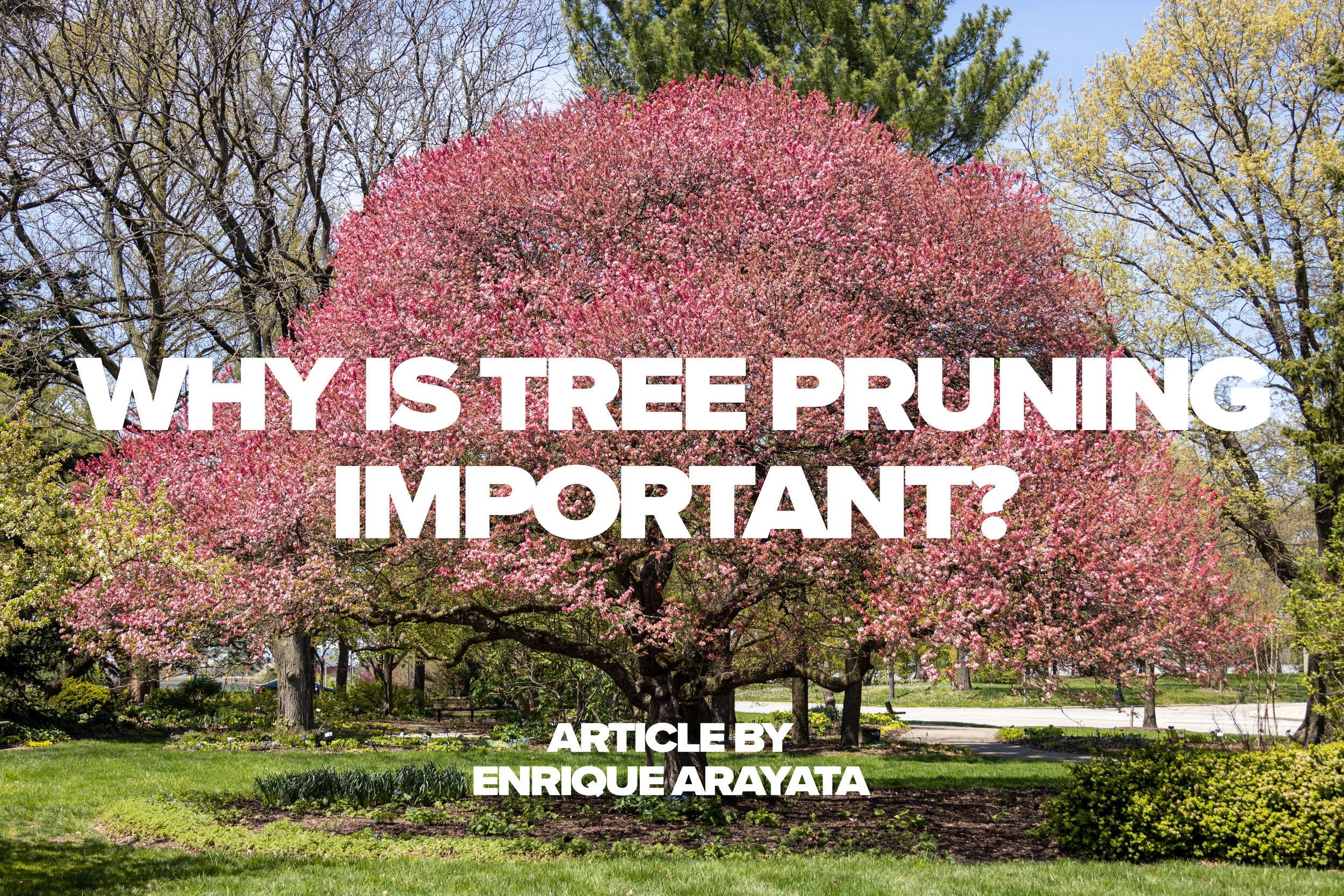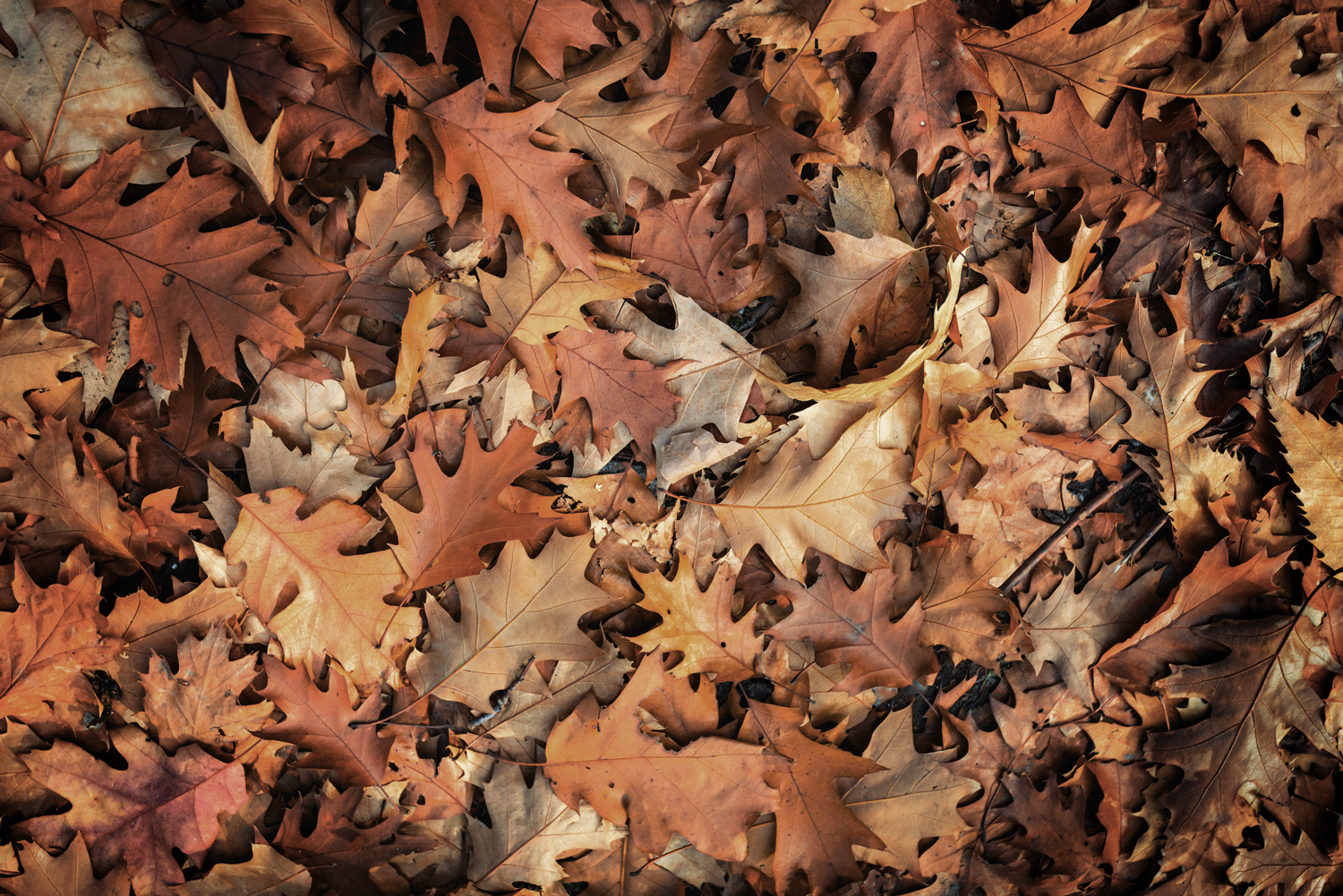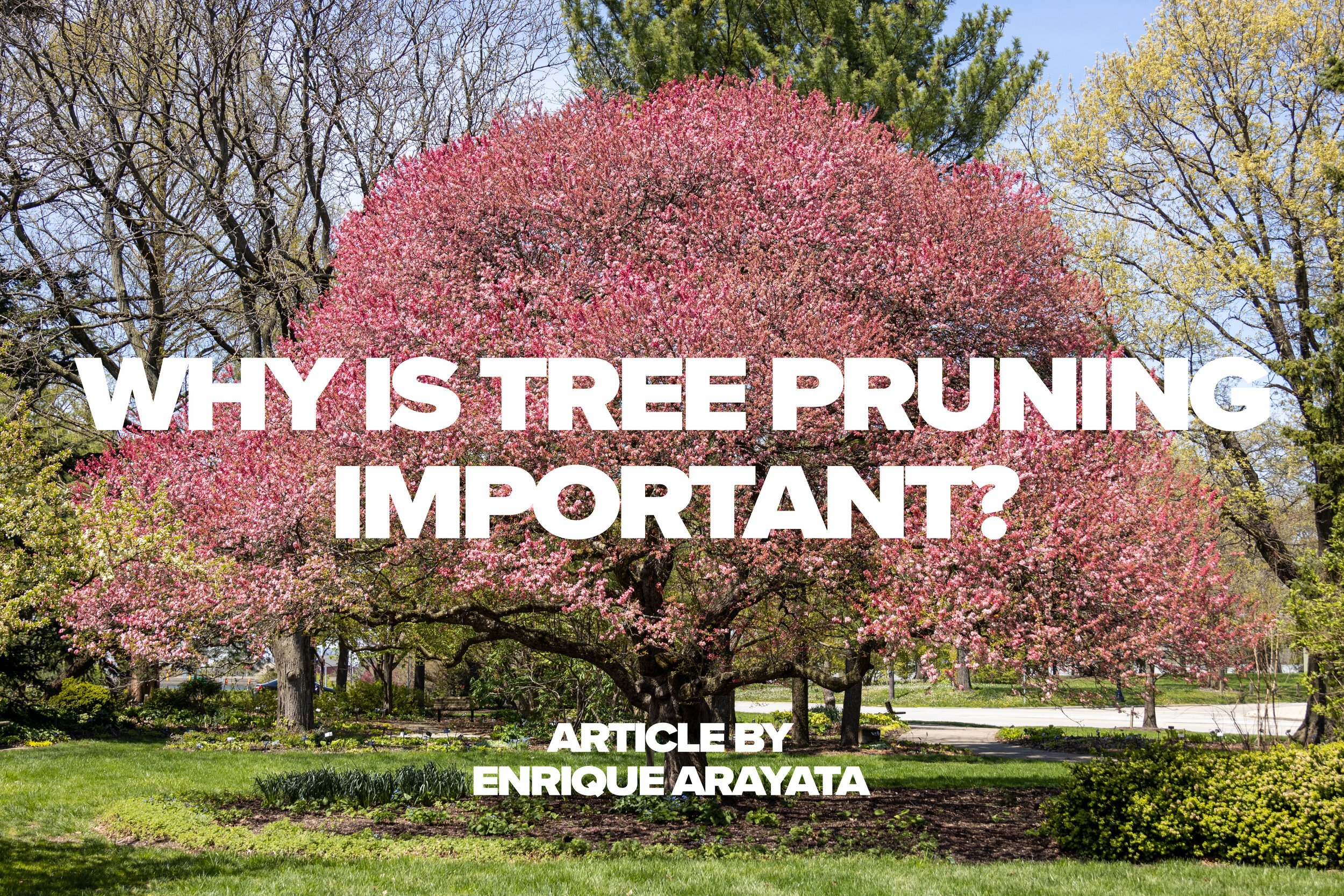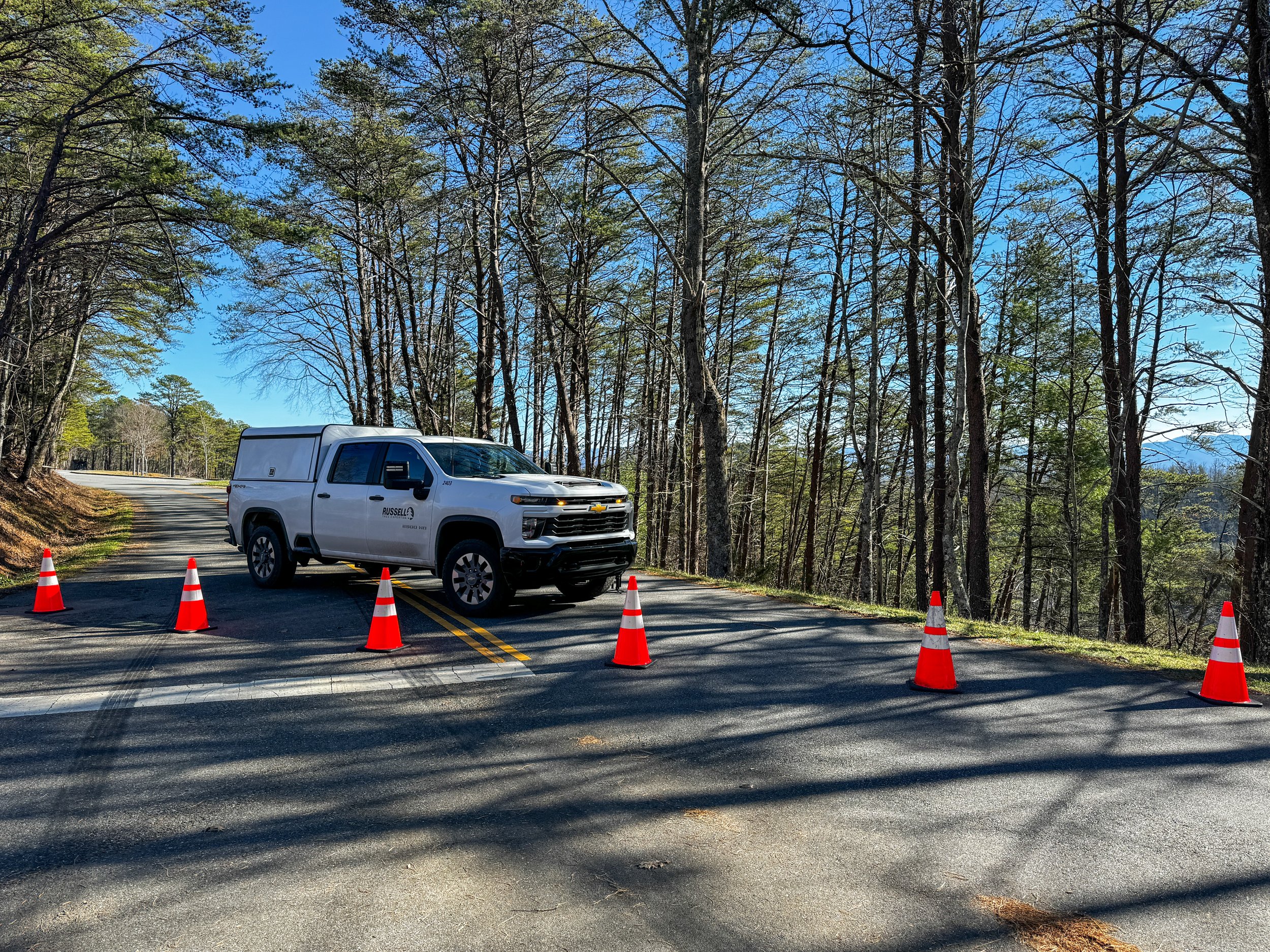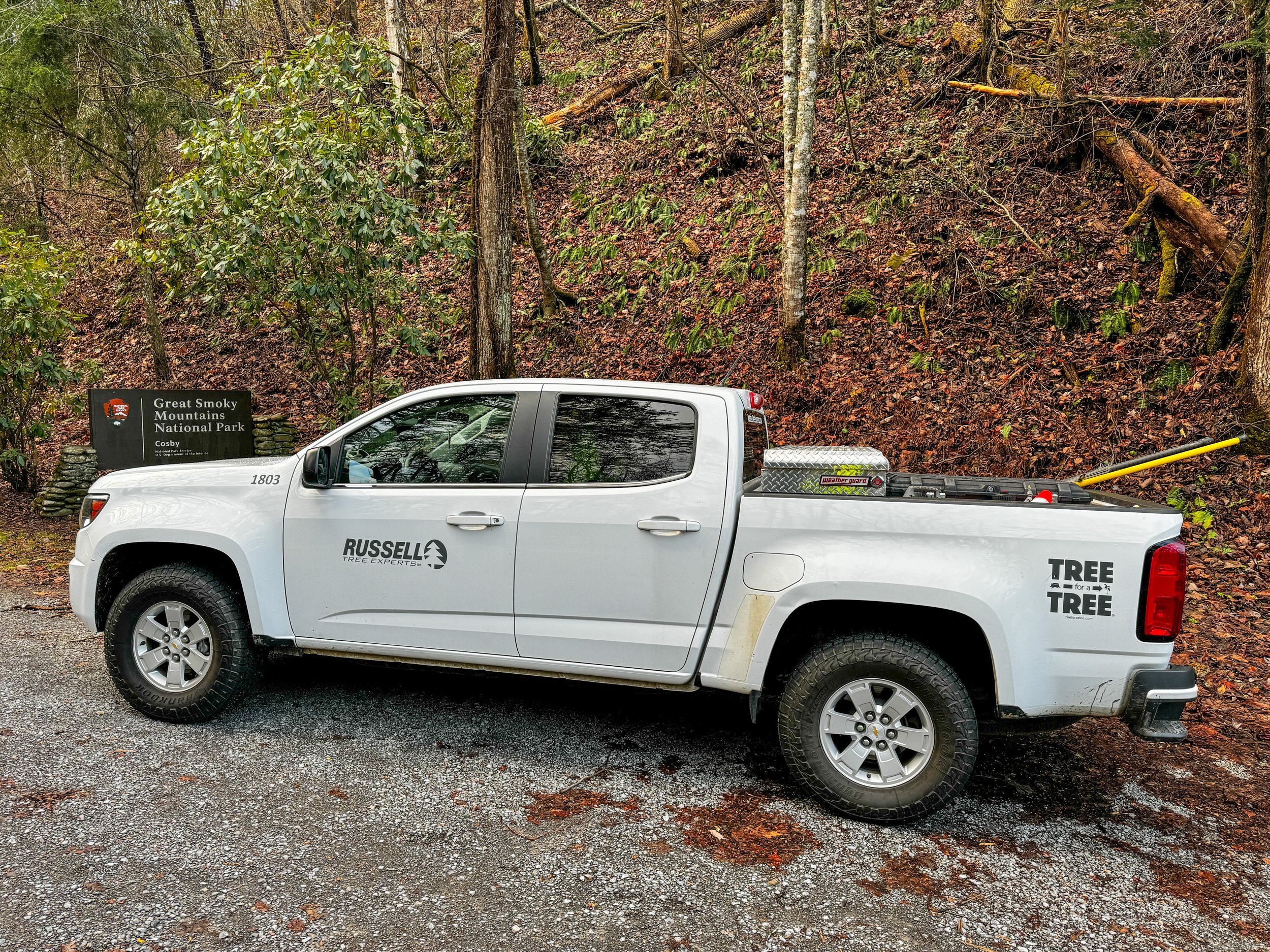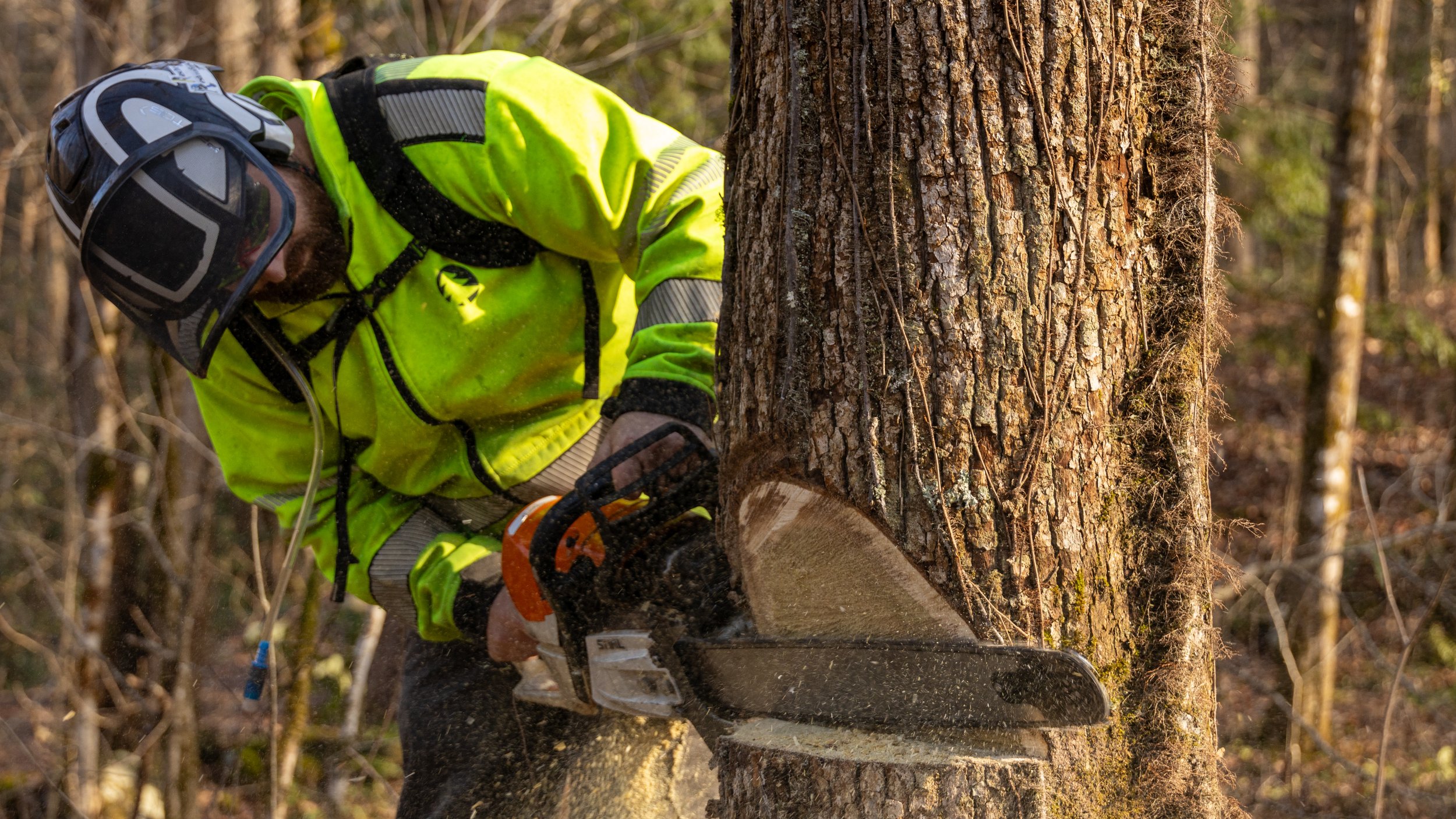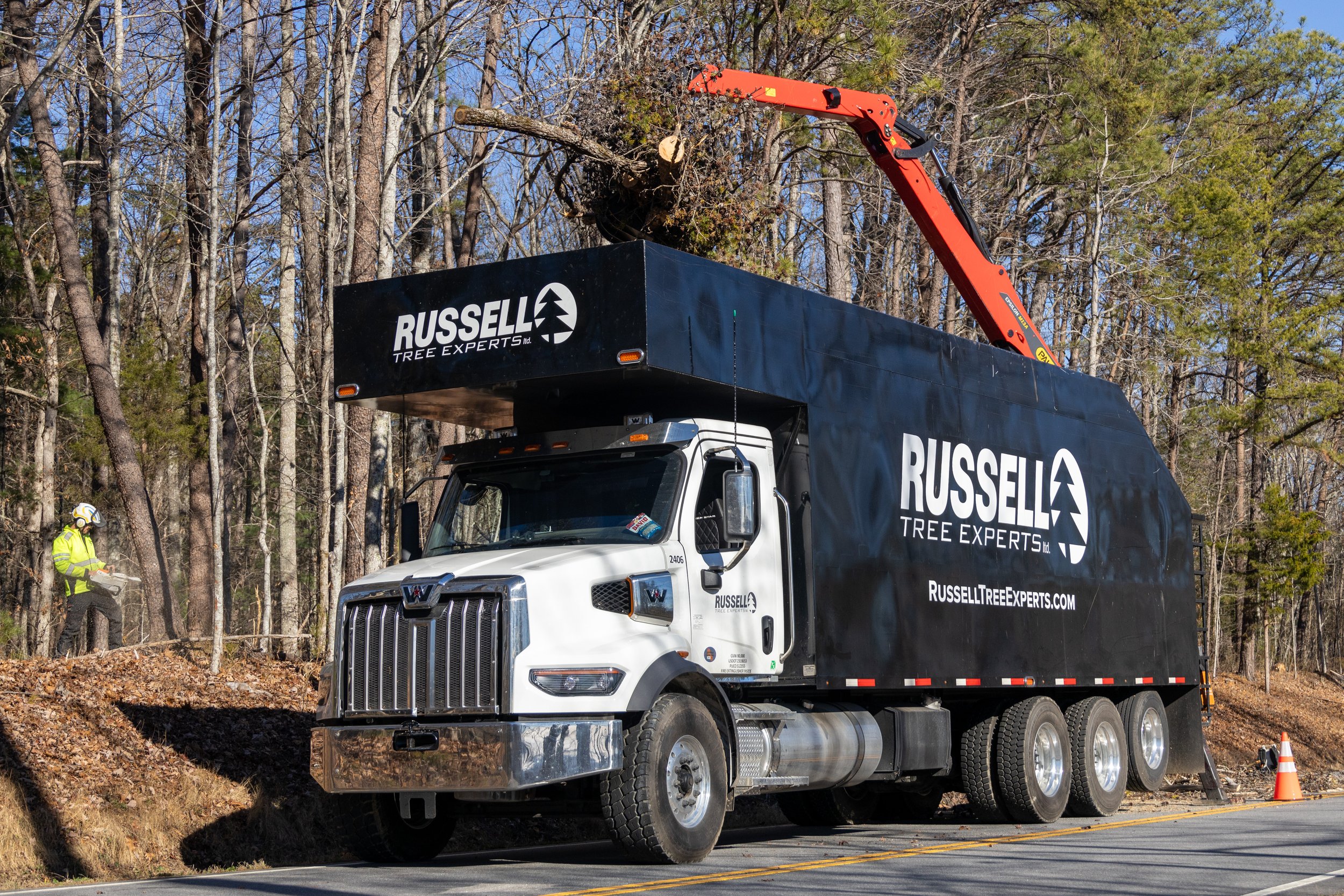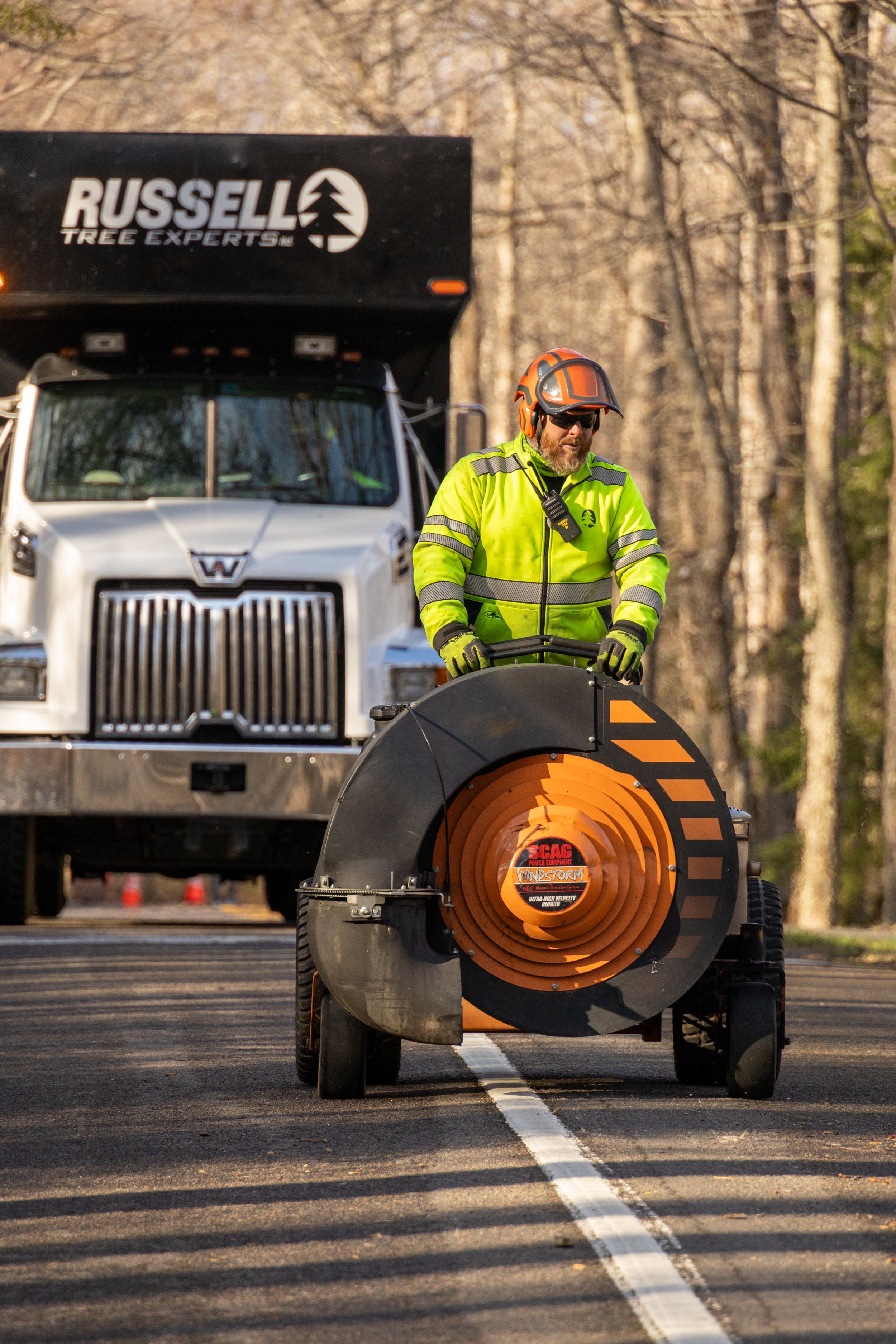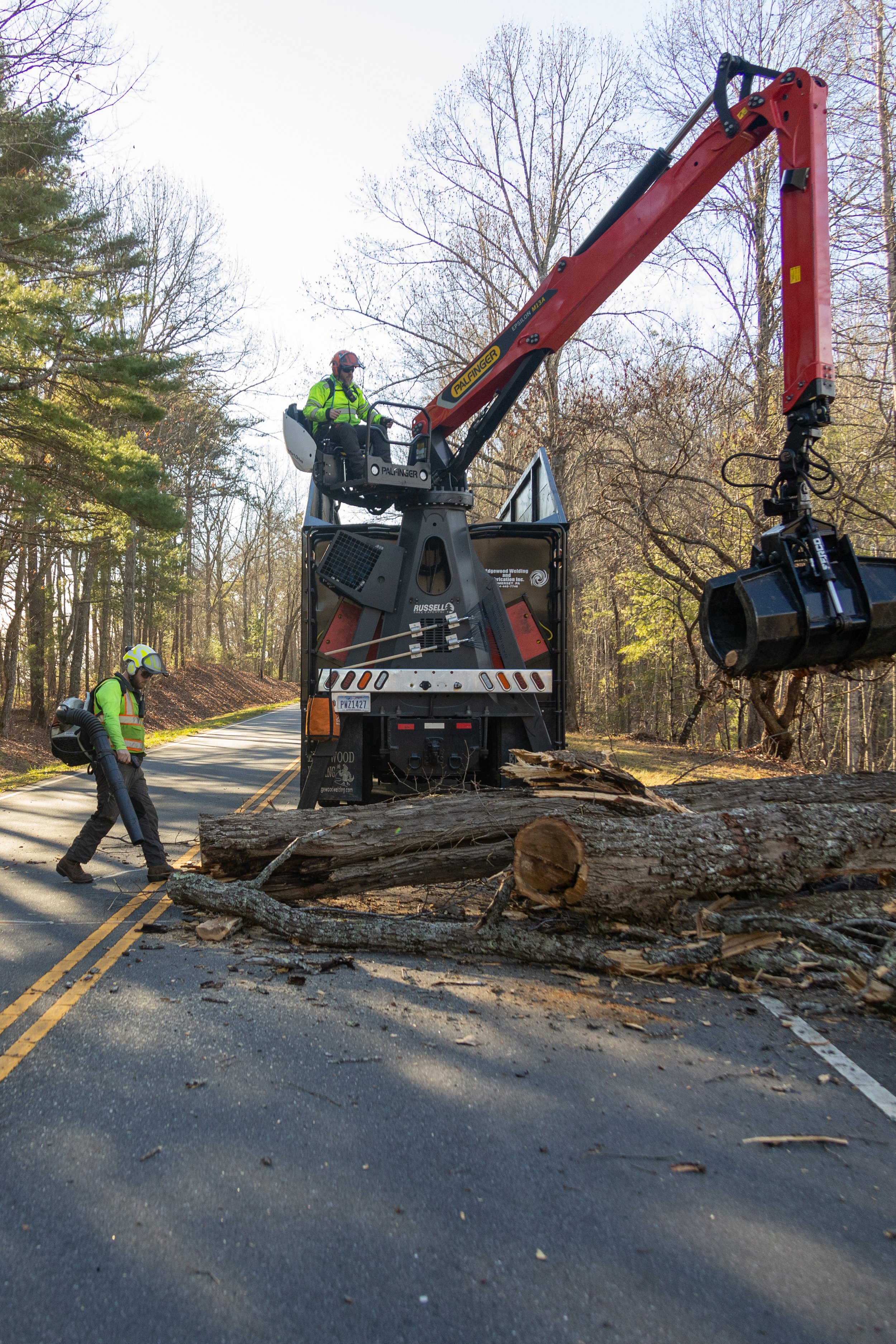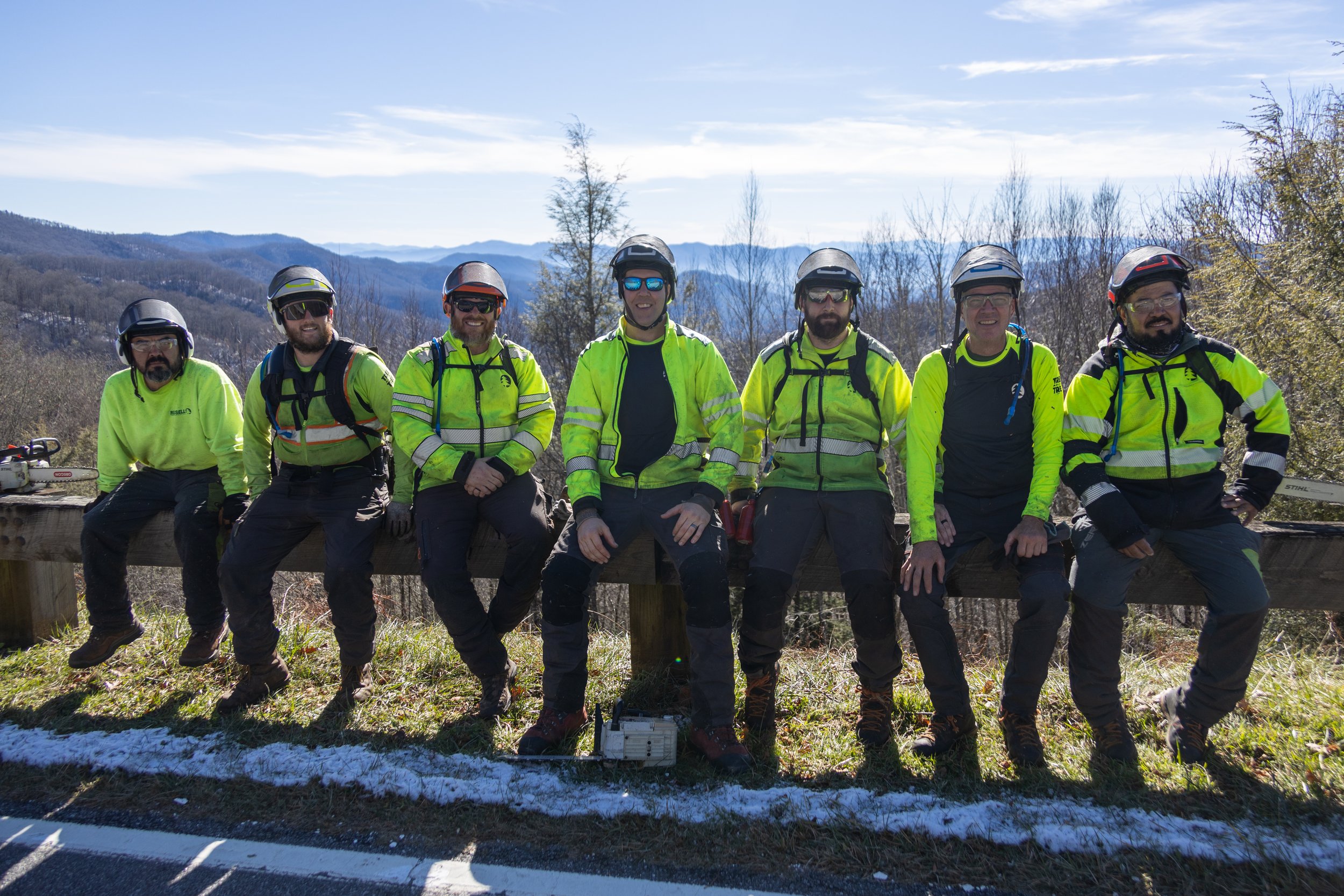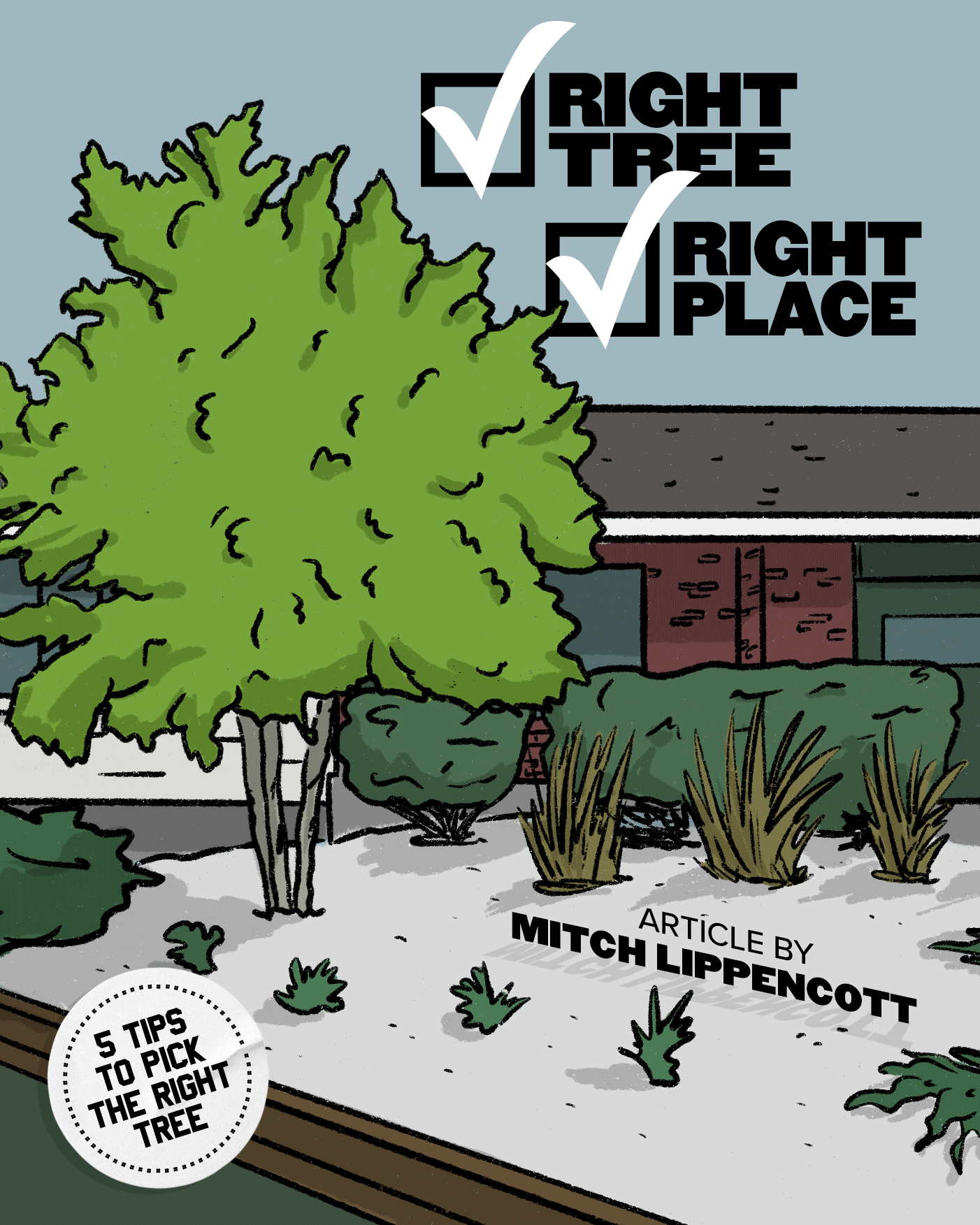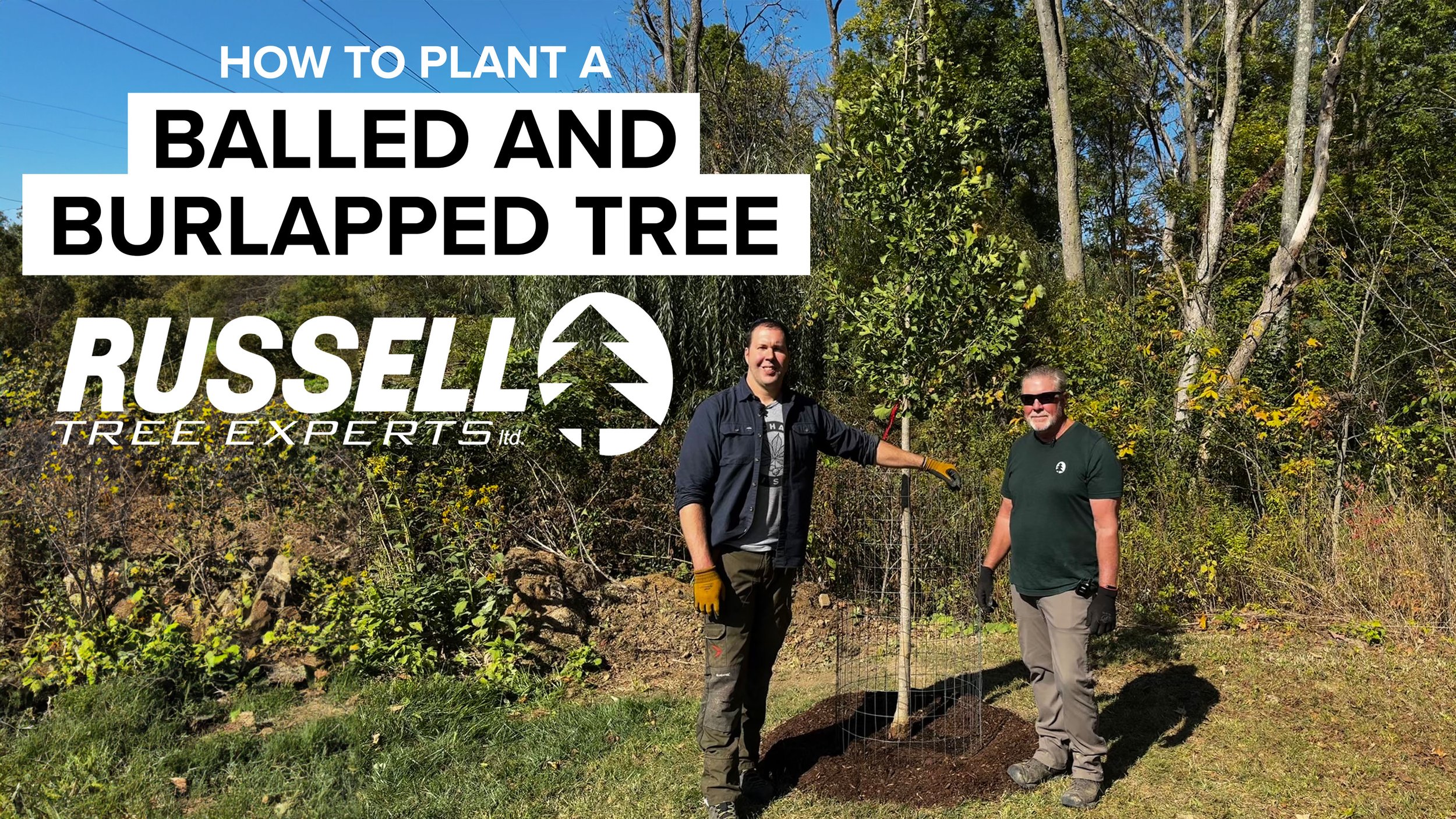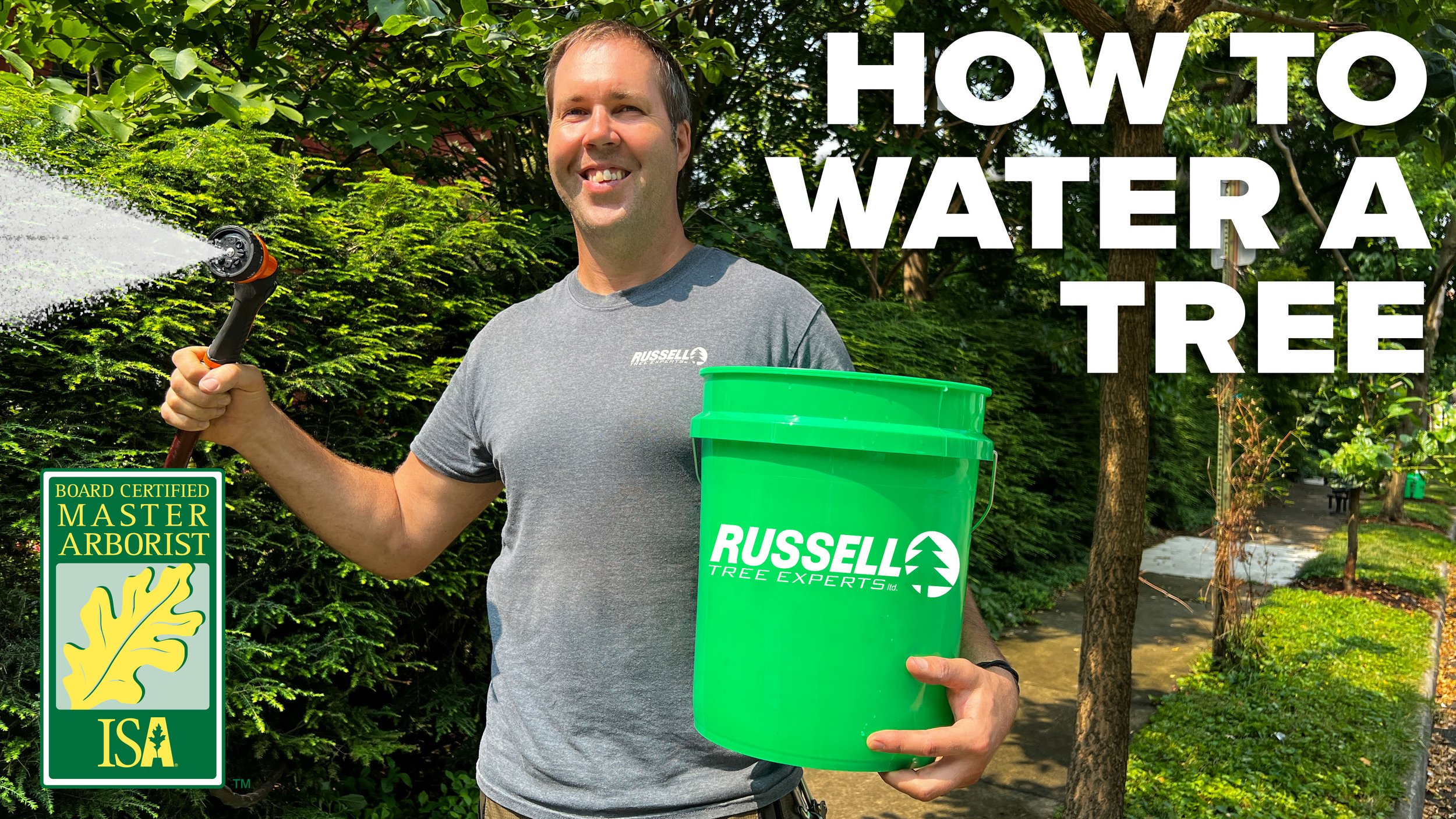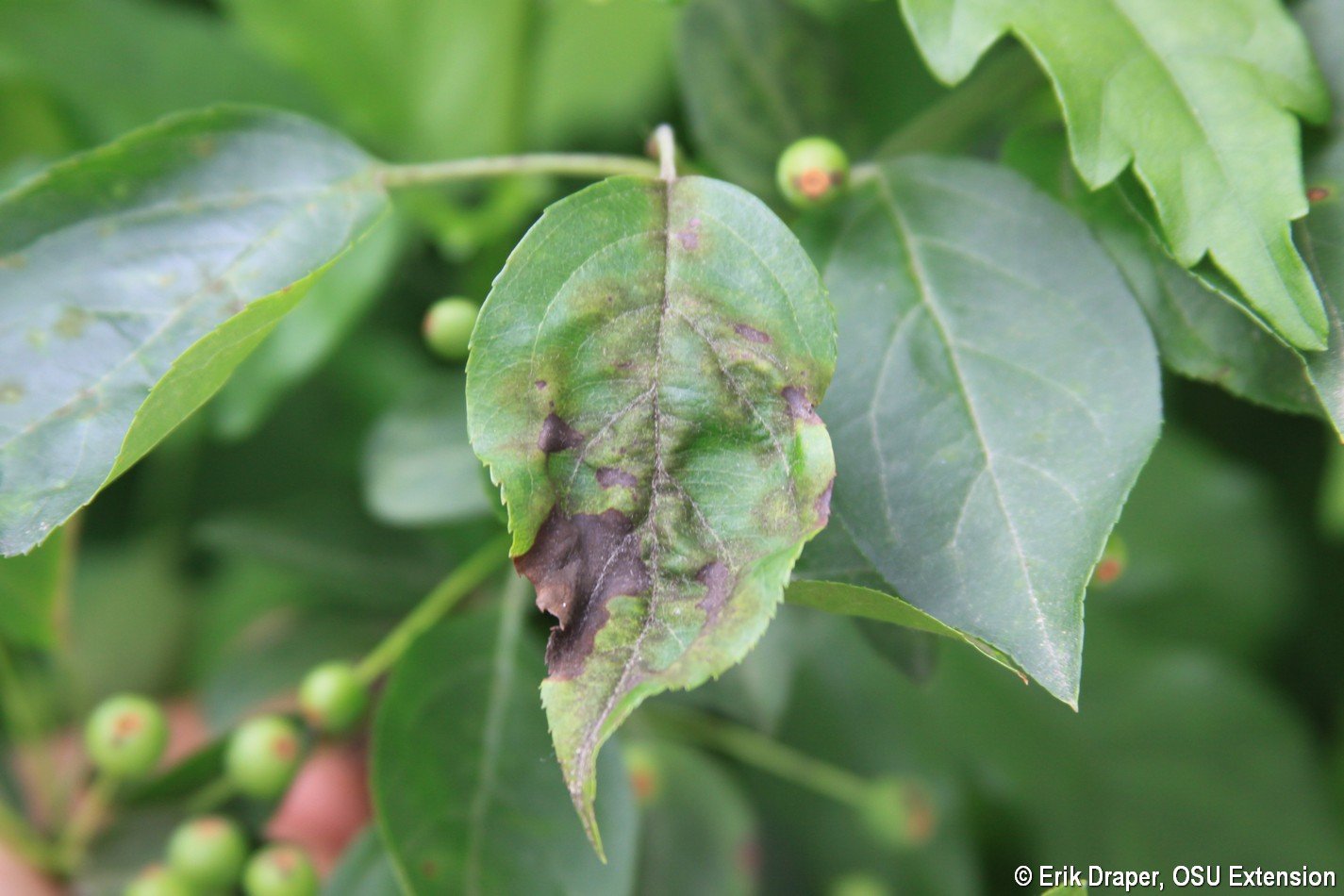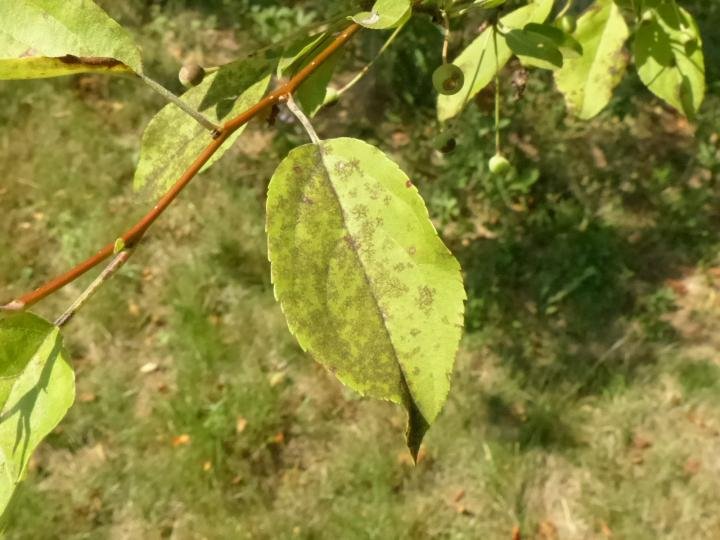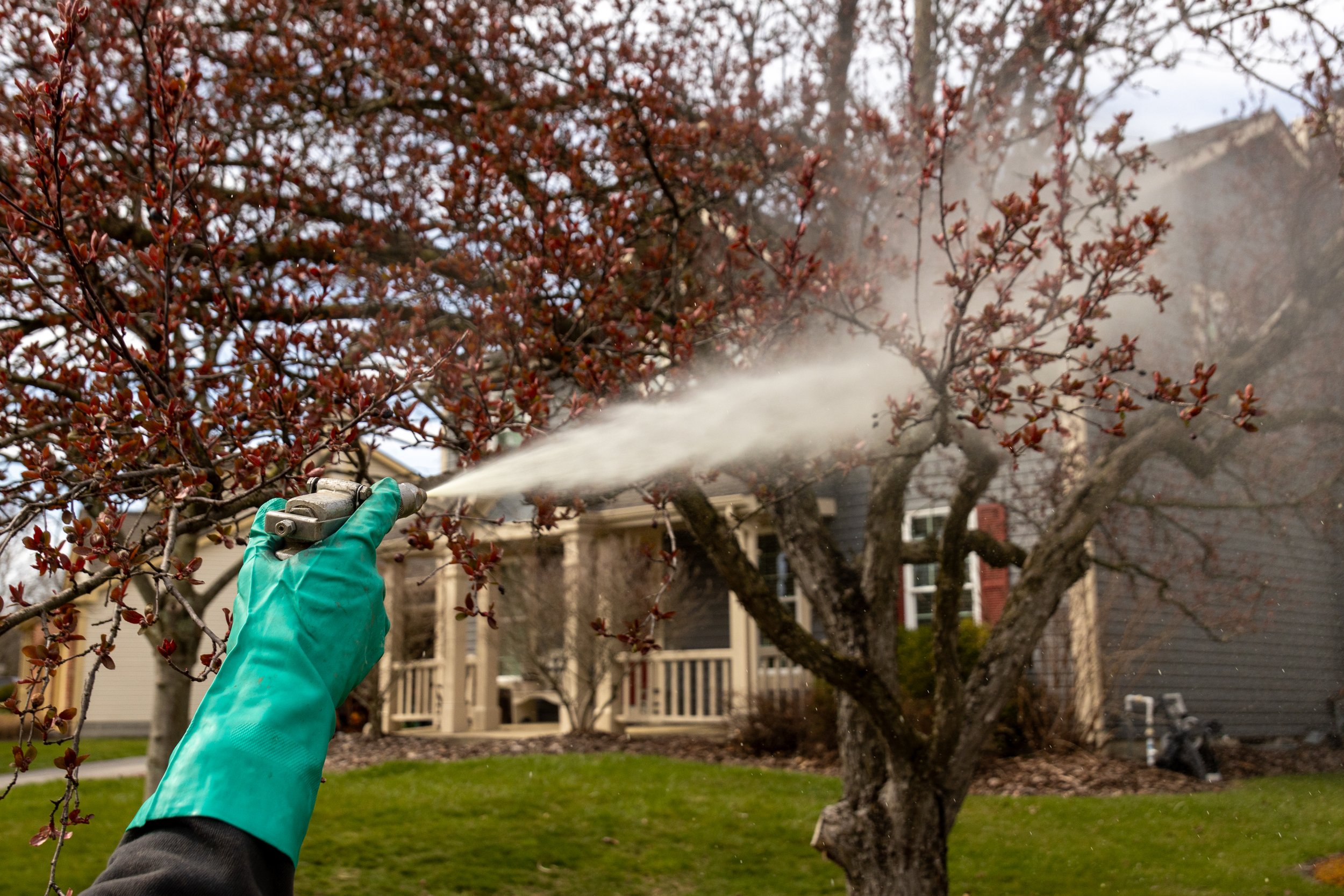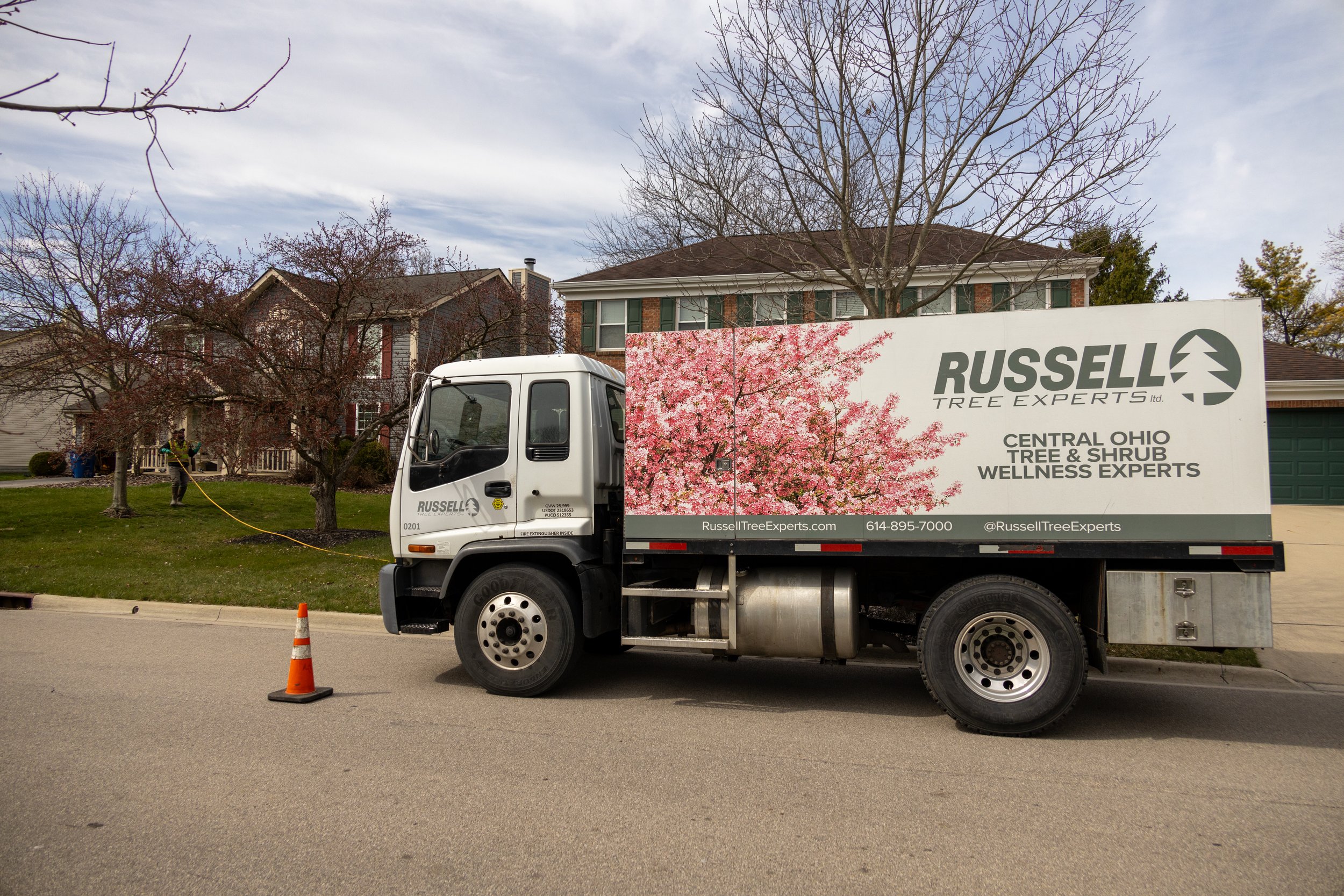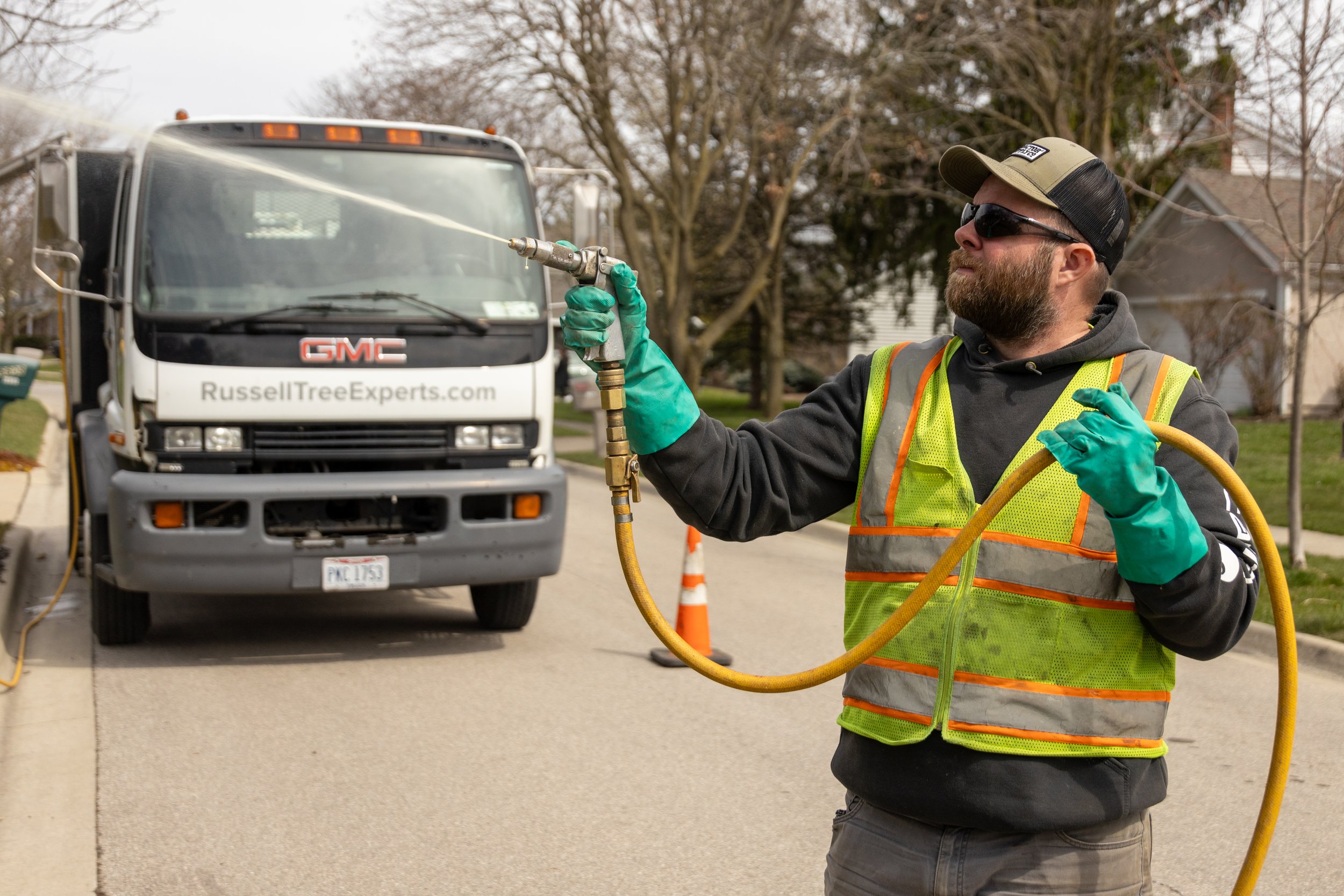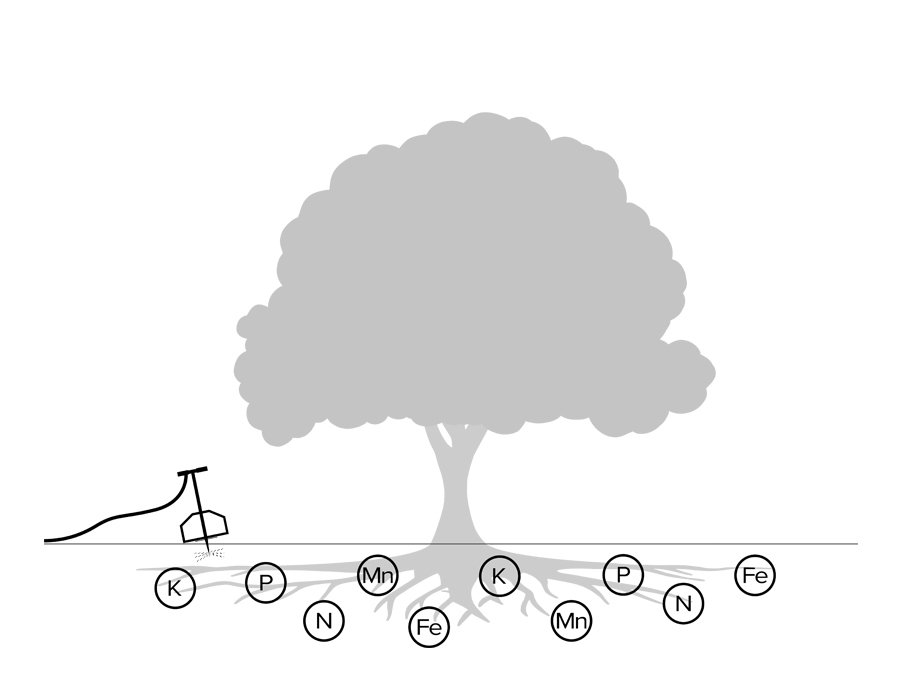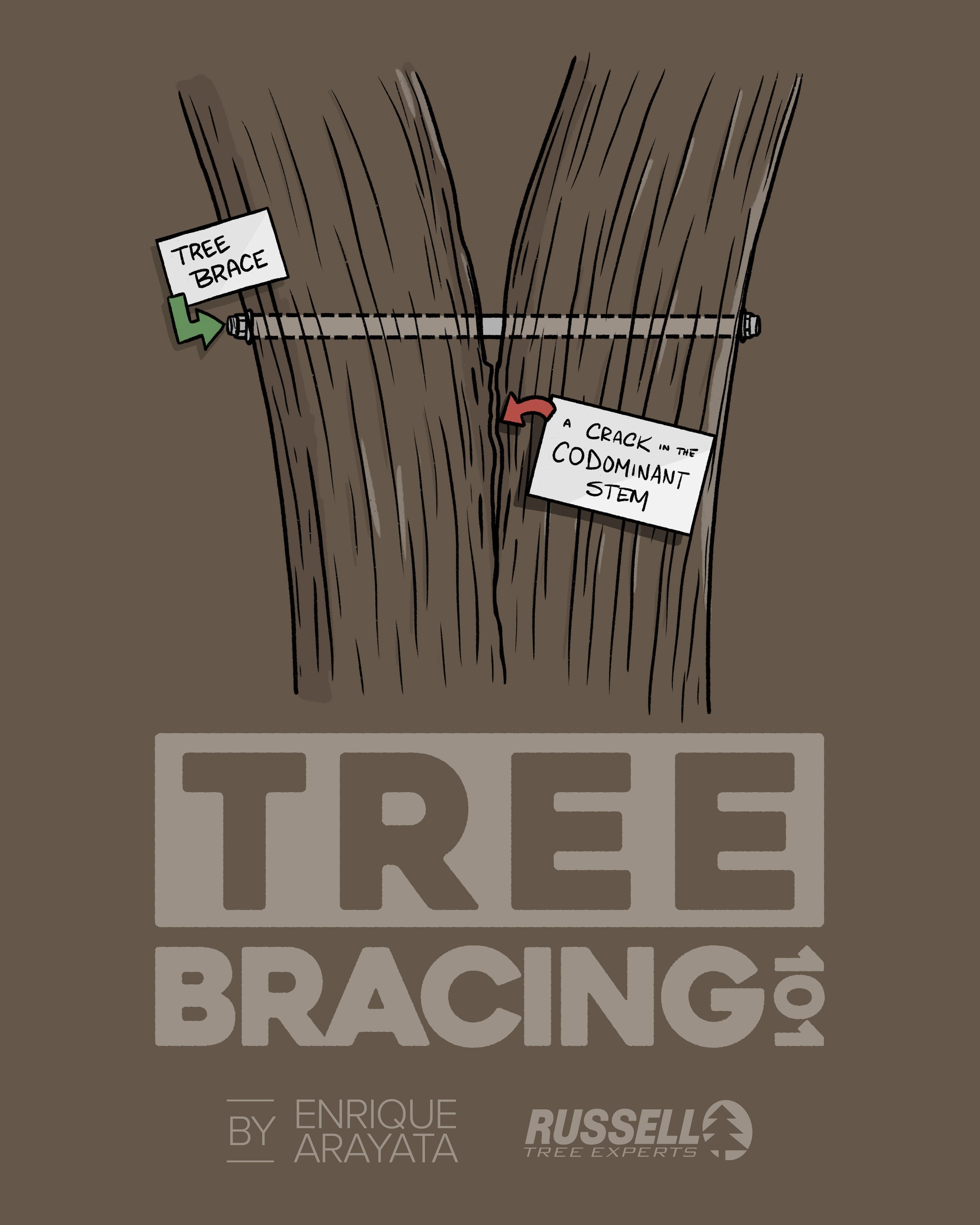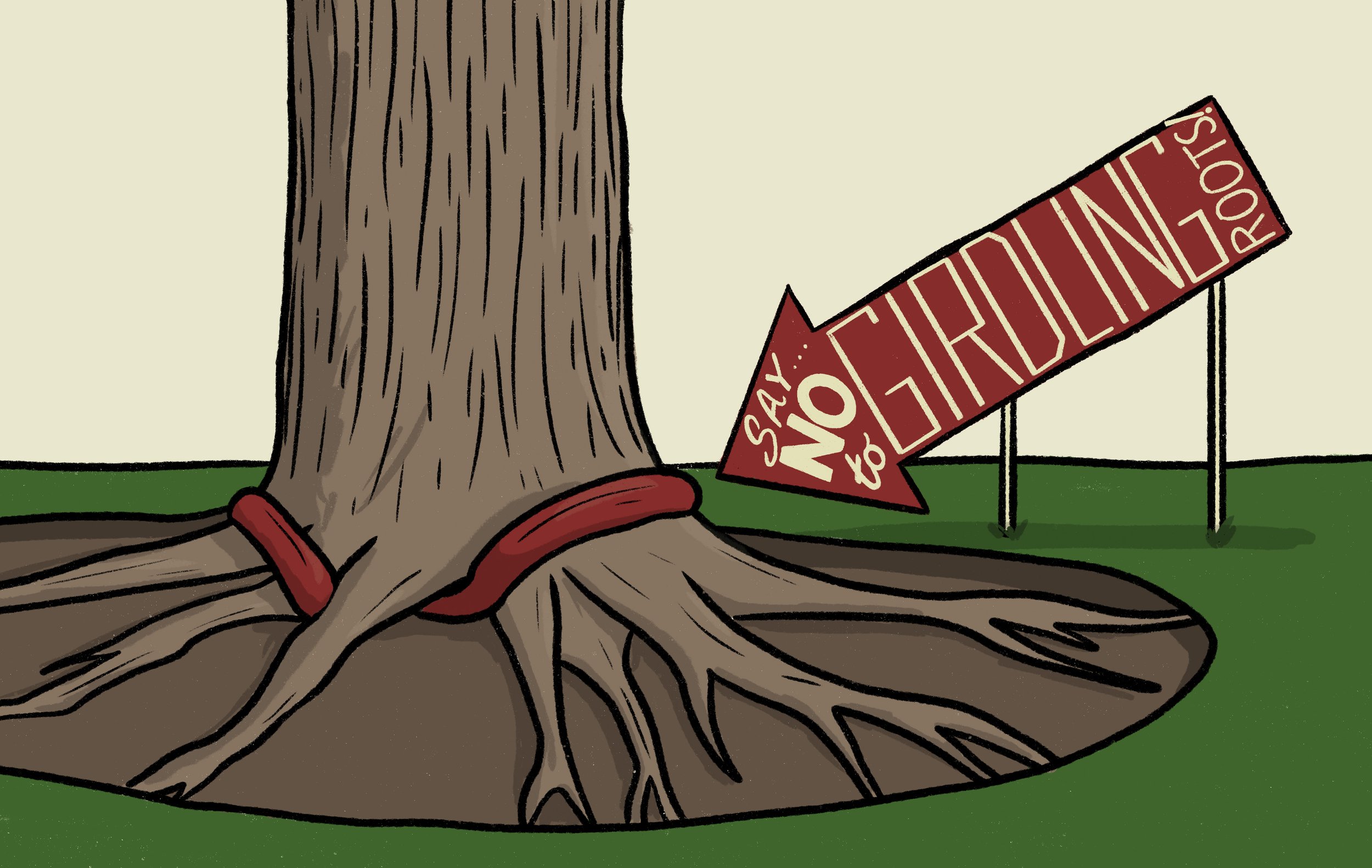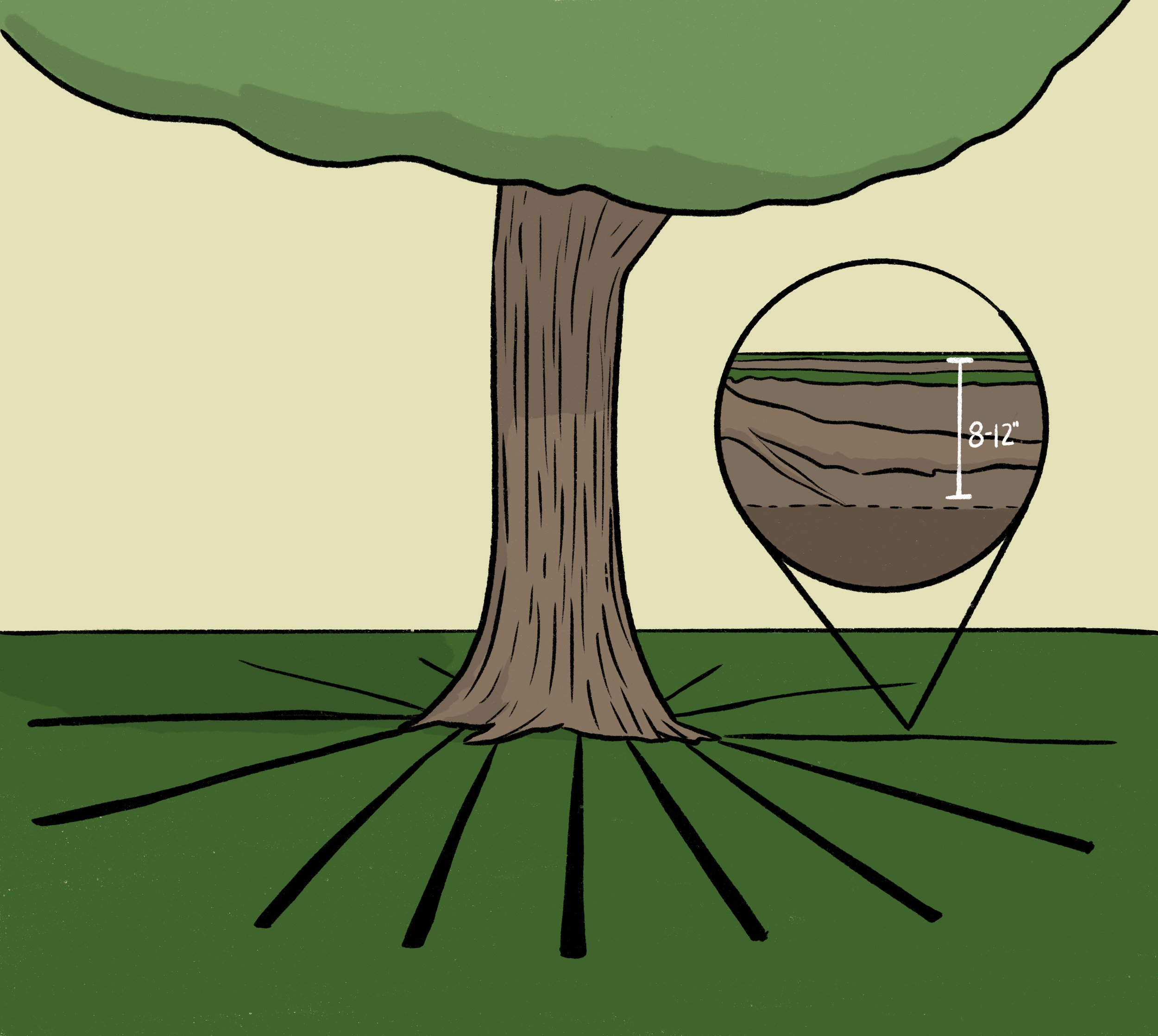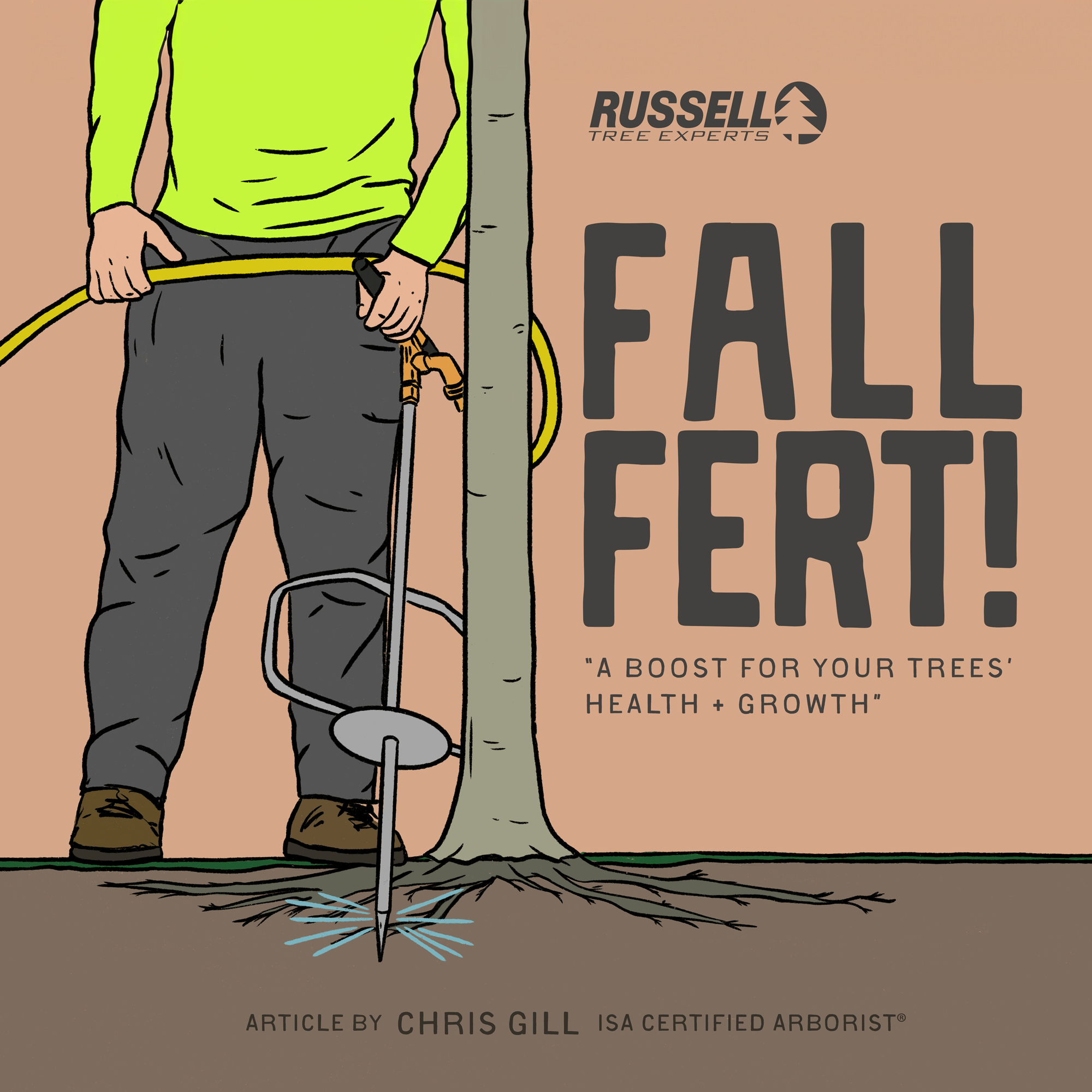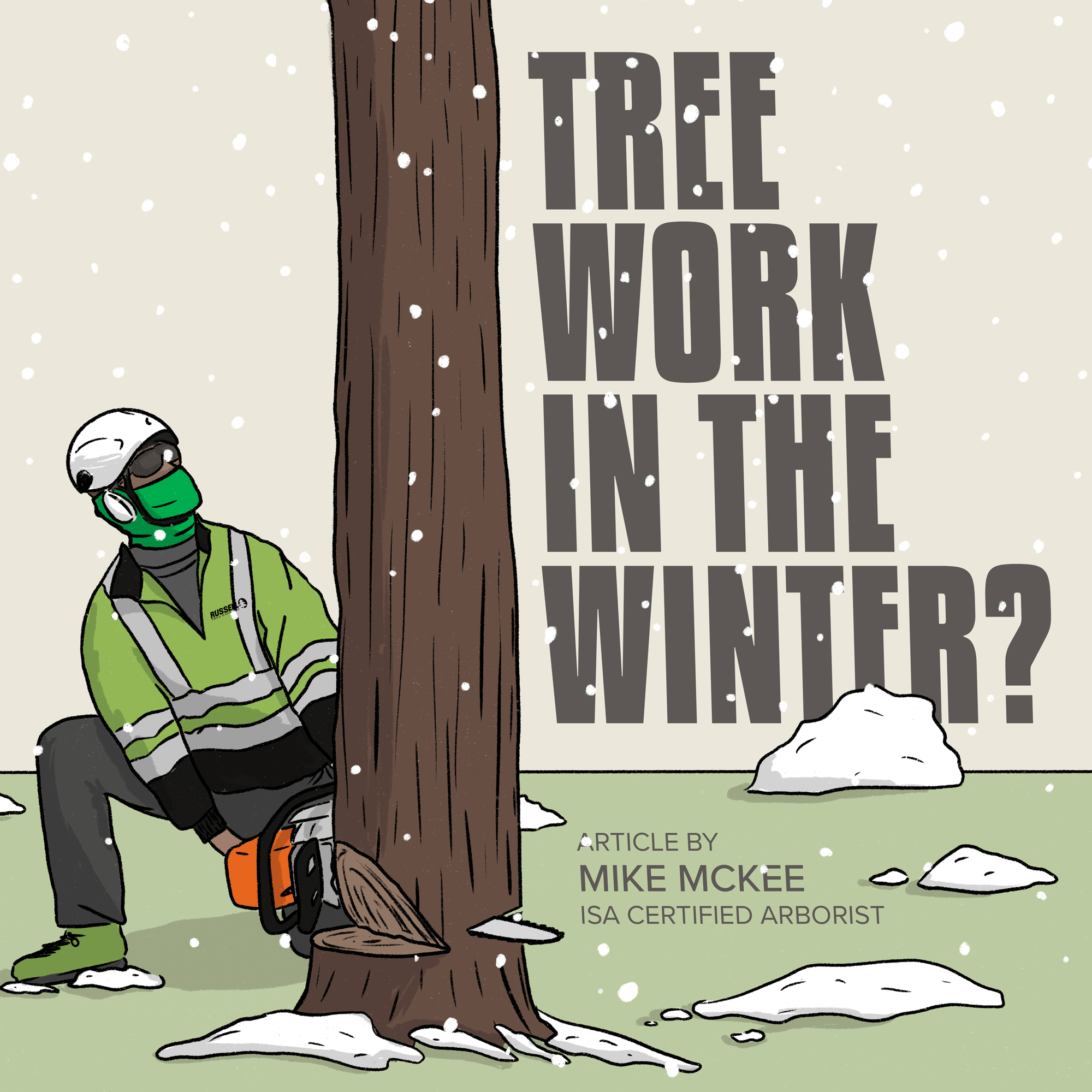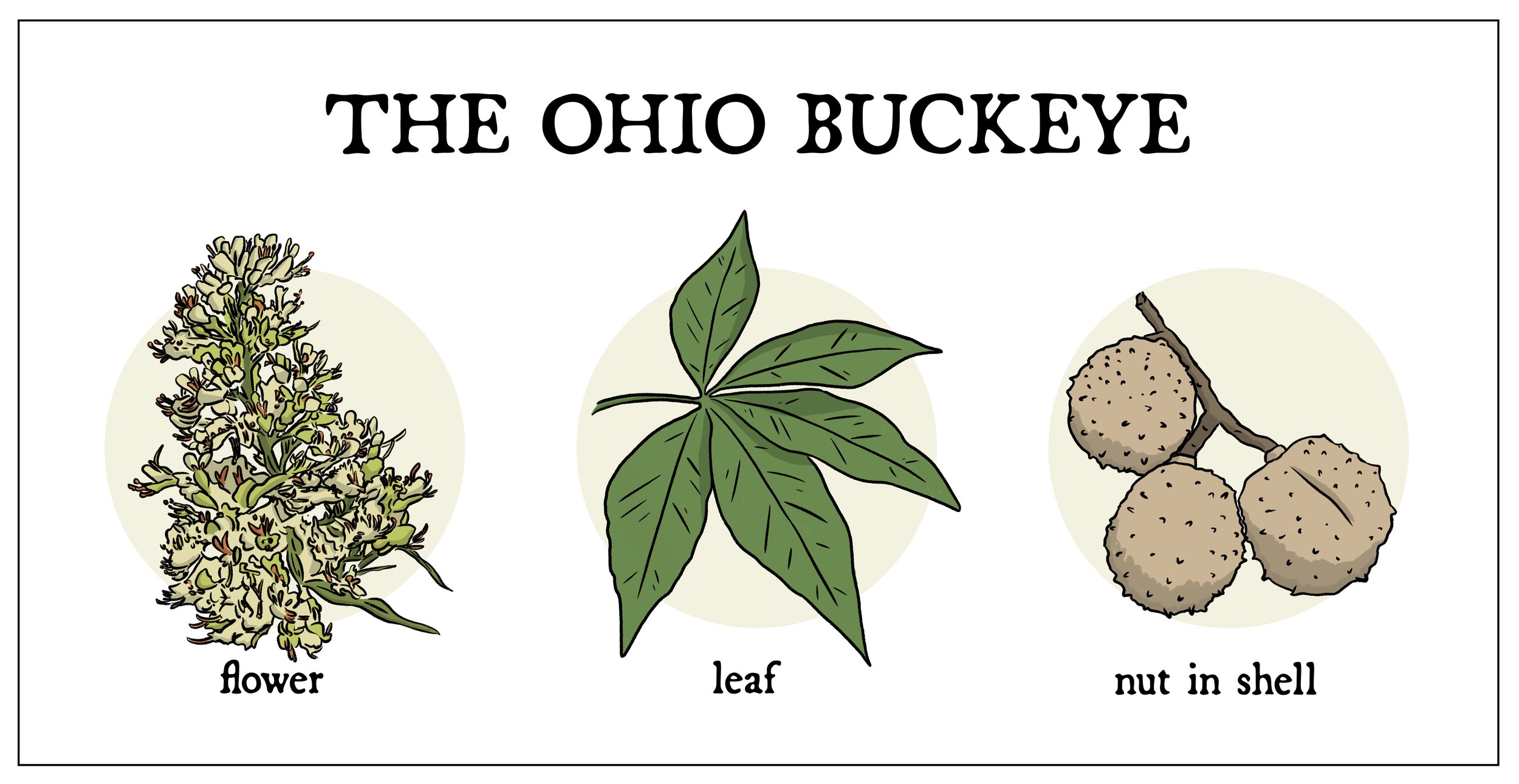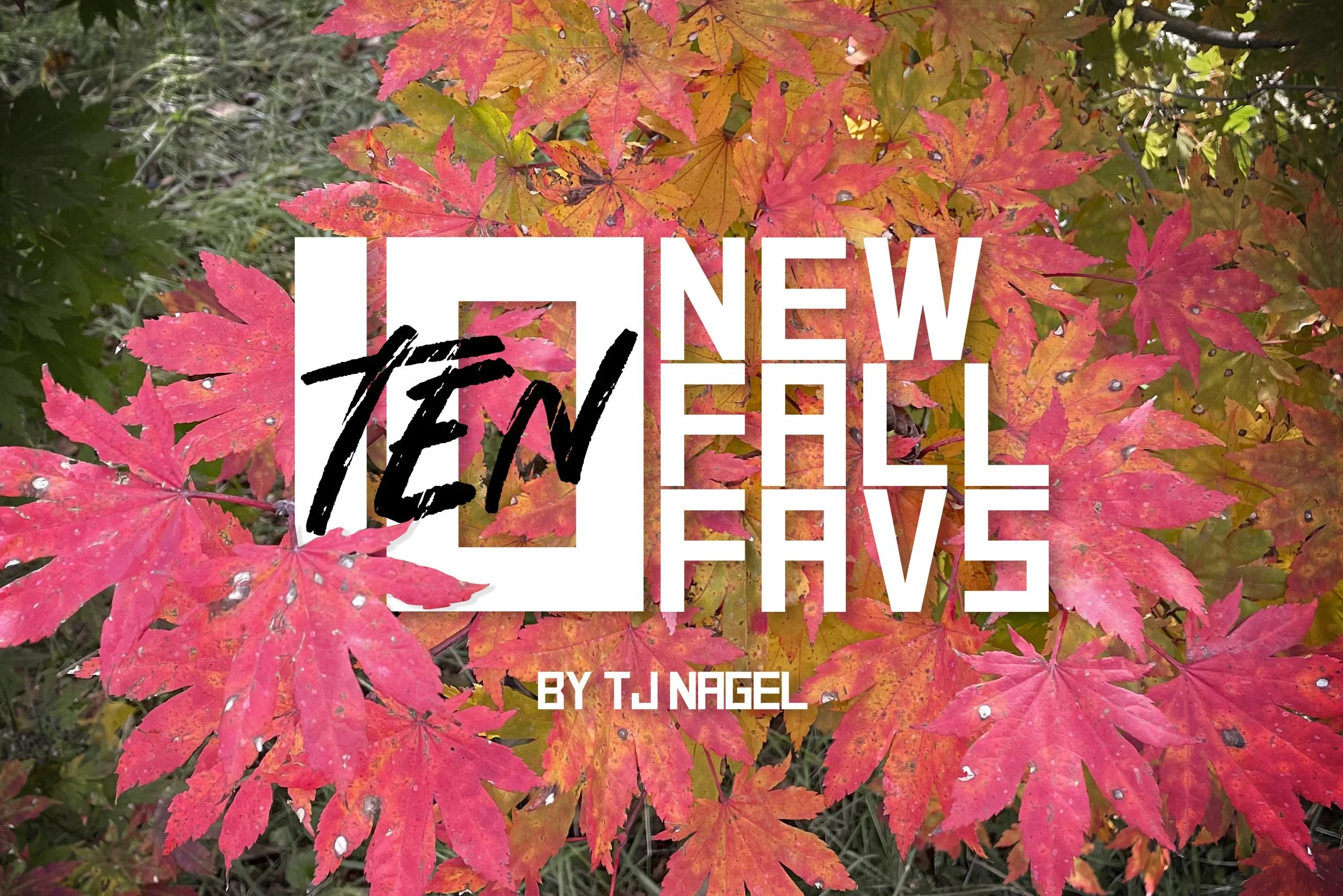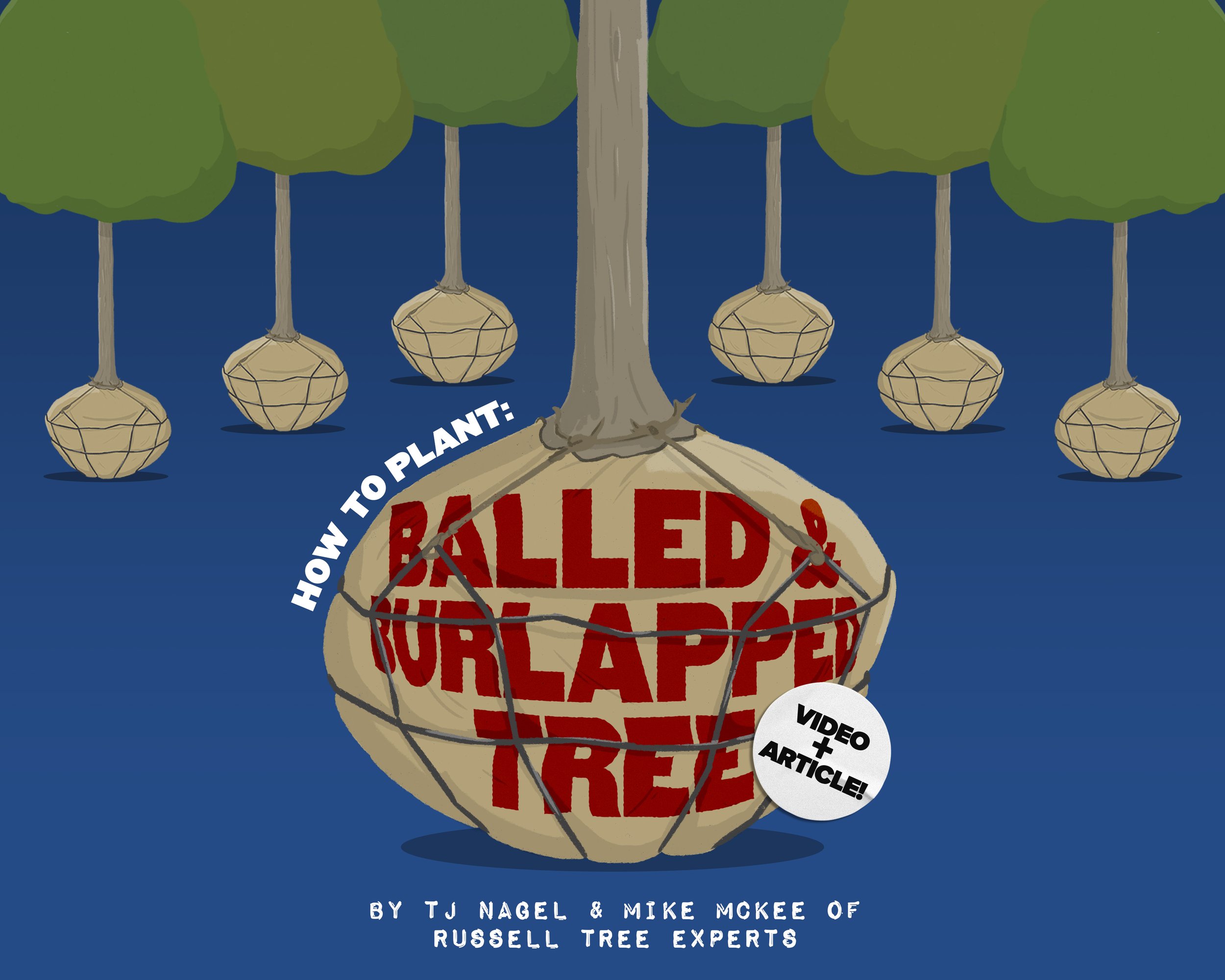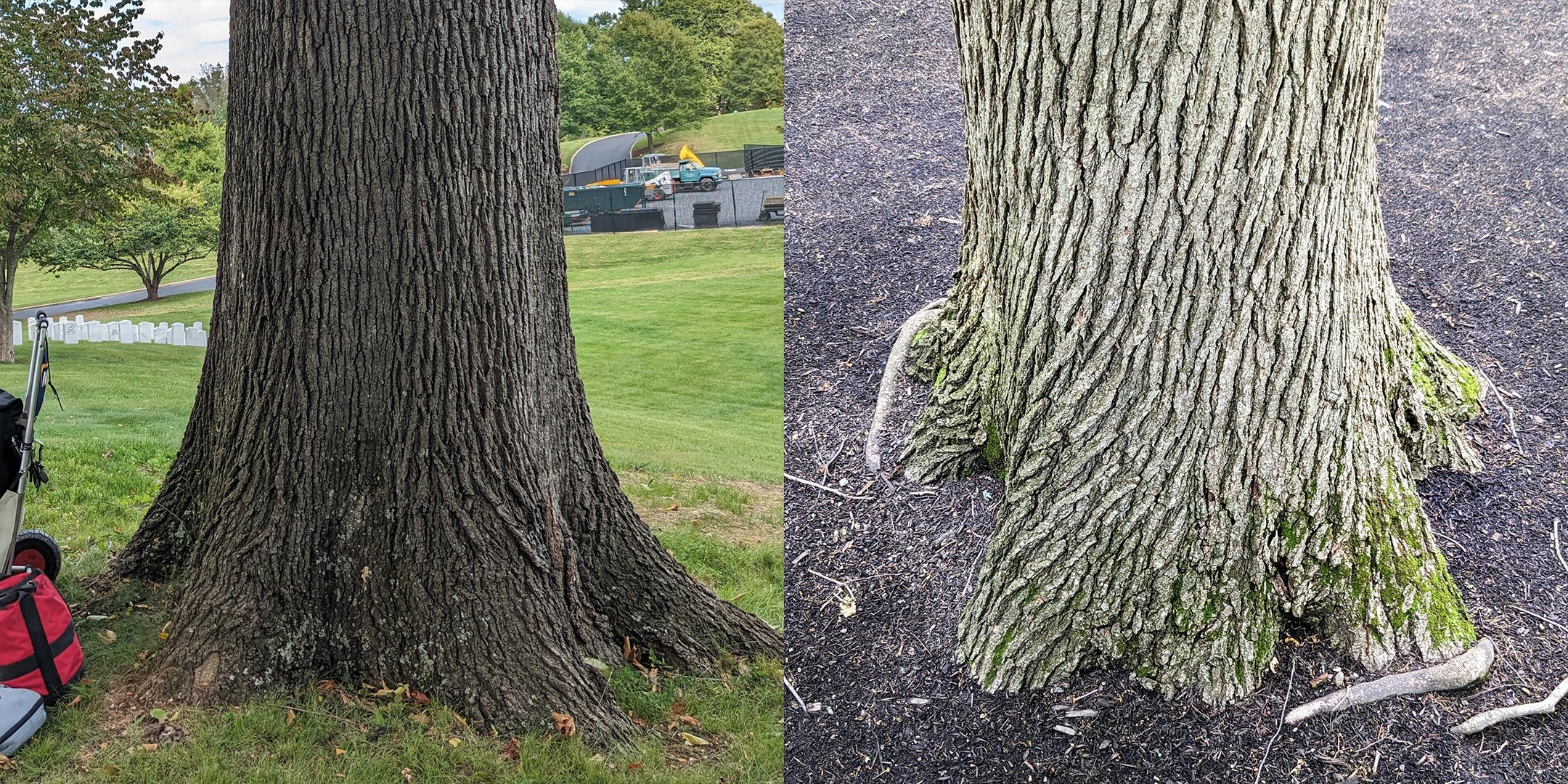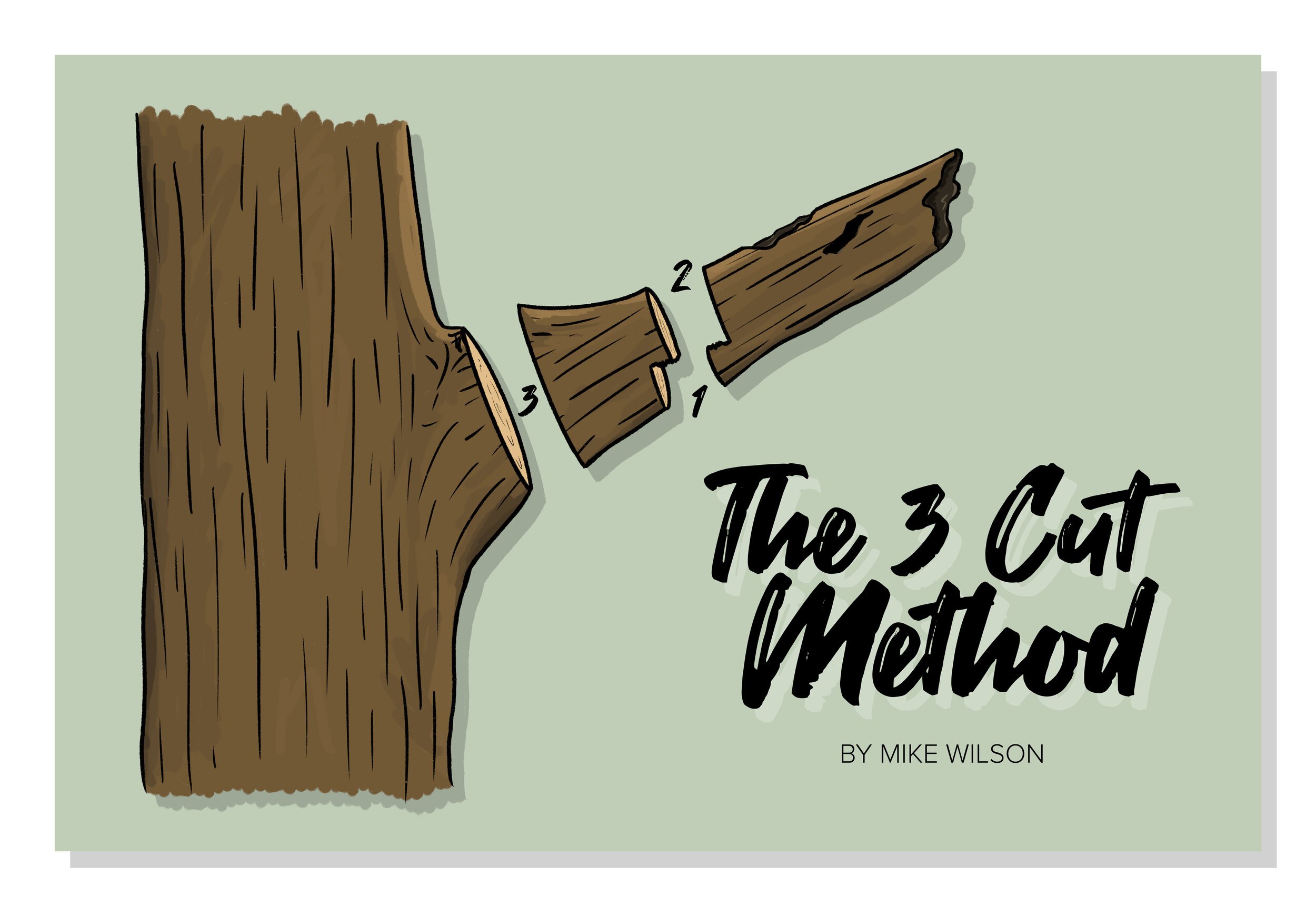By Lindsey Rice
ISA Certified Arborist® OH-6739A
July 3, 2025
In early 2022, I sent out a message warning people to keep an eye out for the spotted lanternfly (SLF) as it was on the move from our neighboring state of Pennsylvania. As of 2025, Franklin County is on the quarantined county list for the Ohio Department of Agriculture. Linked below is a visual map of all quarantined counties in Ohio for SLF:
The spotted lanternfly is an invasive insect that feeds on various plant species, with its primary host being tree-of-heaven (Ailanthus altissima), but has been seen feeding on over 70 different species of plants. Side note: SLF’s attraction to tree-of-heaven is yet another reason why it’s considered a highly invasive tree and should not be planted in Ohio.
Preferred host plants for SLF depending on the time of year and stage of life cycle. (Source: PennState Extension)
Frontal view of a spotted lanternfly. Source: GH Photos Alamy Stock. PSU Extension.
SLF are not harmful to humans as they cannot bite or sting, but they are large in their adult form and look intimidating.
Spotted lanternfly insects are sap suckers and feed on the sap through a tiny, straw-like mouth part. While feeding, they excrete honeydew which has been known to resemble a light rain in forested parts of infested areas. SLF is a plant stressor that, combined with other stressors, can cause significant damage to the host plant. SLF alone may not necessarily kill a tree; it has only been known to kill grapevines, tree-of-heavens, and black walnut saplings directly.
We need to slow the spread of SLF by checking vehicles and any outdoor equipment for egg deposits. If they are present, they need to be destroyed and not moved across quarantine lines. Eggs are laid in the fall from September to December and will hatch in the spring from April to June. They lay their eggs on trees, decks, houses, outdoor equipment, and cars, and are protected by a mud-like covering, making the egg masses difficult to spot.
Adults begin to emerge in July and remain active until a hard freeze.
Late spring/early summer
Spotted lanternfly nymph
When they start hatching, they will look like little black insects with white spots, and they will not turn red until about mid-summer. Watch out for the combination of honeydew/black sooty mold/wasp swarms around your trees, because it could be an indicator of an invasion.
Management options
There isn’t a one-size-fits-all solution for how to eliminate SLF. Biologically speaking, there are currently no known natural enemies of SLF. Some general predators like spiders and birds have been observed attacking SLF. Culturally speaking, removing trees that are preferred hosts for SLF can minimize the risk of SLF in your area. We would only recommend tree removal if the tree is a tree-of-heaven as it is highly invasive in Ohio or if the tree is already heavily decayed and at risk of damaging your property. Mechanically, SLF eggs can be destroyed by contact with rubbing alcohol or hand sanitizer. SLF nymphs or insects can also be destroyed by smashing them, such as by boot or fly swatter.
Contact insecticides can be used by spraying either the nymphs or the adults from May through October. Be cautious of spraying actively blooming plants to minimize the risk of killing beneficial insects. Systemic insecticides can be used to control and kill SLF adults from May through September. According to PennState Extension, chemical products containing beta-cyfluthrin or bifenthrin have shown excellent results against SLF. One such product that should be available at a nearby gardening store is Ortho BugClear. Unfortunately, due to SLF being nimble and fast travelers, just because you treat your property or plant material once, doesn’t mean they won’t come back. Linked below is a great resource by PennState Extension with more information on managing SLF. To be clear, we’re not sponsored by PennState Extension or Ortho.
https://extension.psu.edu/spotted-lanternfly-management-guide
Please be diligent about stopping the spread of this invasive pest. When traveling and vacationing this summer, please be diligent in inspecting your vehicles, camping equipment, and basically anything that is exposed and stationary for more than a couple of hours, especially in known outbreak areas.
If you believe your tree might be infested with spotted lanternfly insects, one of our 20+ ISA Certified Arborists® can provide a free tree quote to determine the best care for your trees at RussellTreeExperts.com/Quote or at (614) 895-7000!
Please note: This article was originally published on 7/31/2024 and was revised on 7/3/2025.
ADDITIONAL ARBOR ED™ ARTICLES!
Lindsey Rice | Operations Manager, Russell Tree Experts
Lindsey is an ISA Certified Arborist® and joined Russell Tree Experts in 2015 with a B.S. in Agribusiness and a minor in Horticulture from The Ohio State University. Growing up in Northwest Ohio, she participated in various sports, band, and FFA which ultimately inspired her love for the tree industry. In her free time she loves to spend it outdoors with her husband and daughters.
















